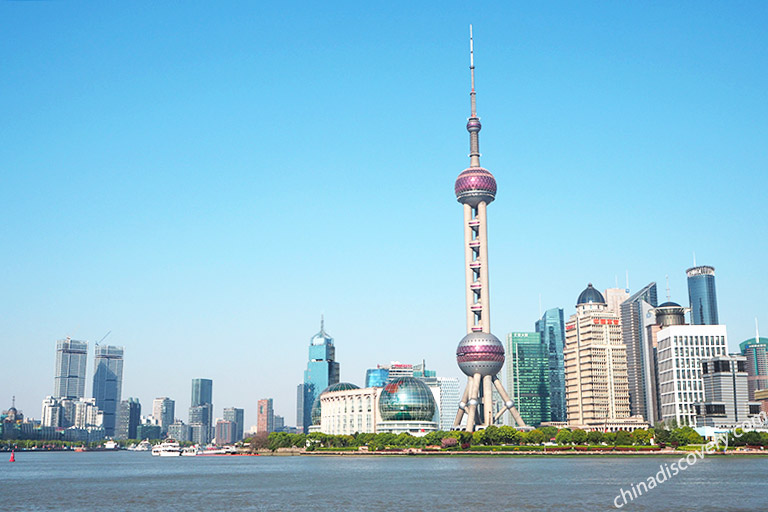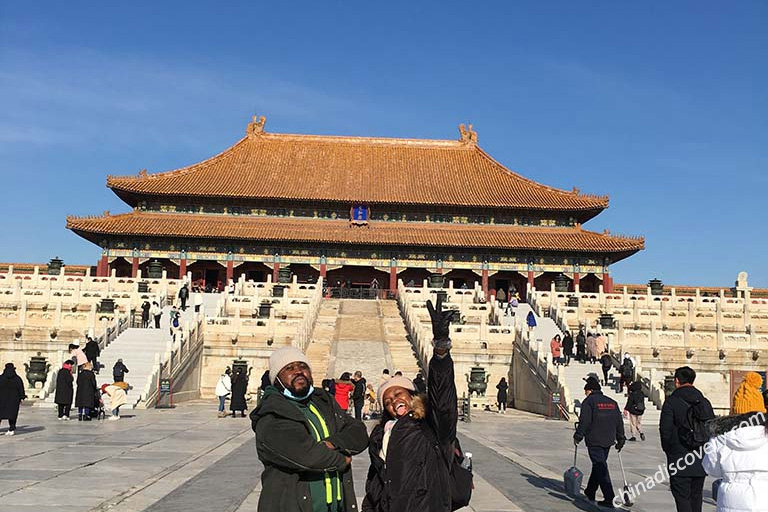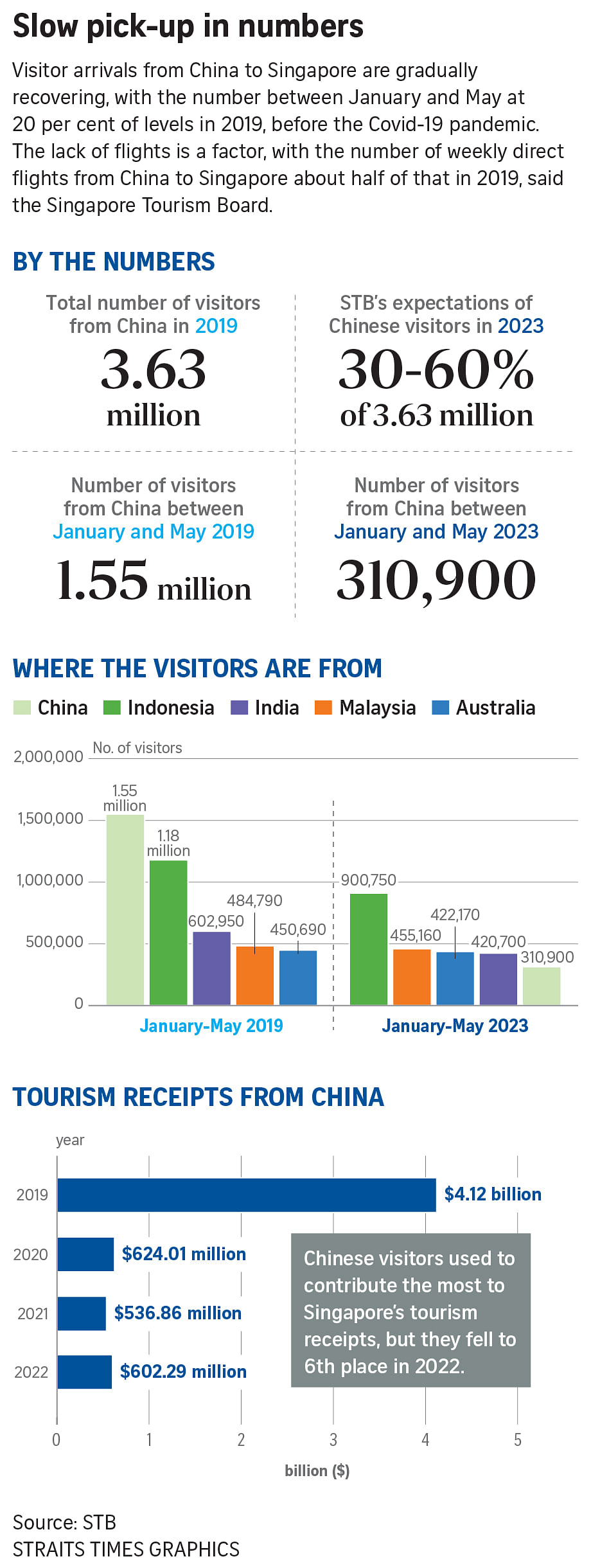- 86-19138970032 (GMT+8 18:00~09:00)

- Beijing Xian Tours
- Shanghai Beijing Tours
- Hong Kong Guilin Tours
- Hangzhou Suzhou Tours
- Kunming Lijiang Tours
- Shanghai Yangtze Cruise Tours
- Chengdu Tibet Tours
- More Short Stay Tours
- China Tours in January
- China Tours in February
- China Tours in March
- China Tours in April
- China Tours in May
- China Tours in June
- China Tours in July
- China Tours in August
- China Tours in September
- China Tours in October
- China Tours in November
- China Tours in December

- High Speed Trains
- China Yangtze Cruise Tour
- Photography
- Desert Adventure
- Ethnic Villages
- Biking Tours
- Kung Fu Tours
- Heritage Sites Exploration
- China Spring Tours
- China Summer Tours
- China Autumn Tours
- China Winter Tours

- Best-value Yangtze Cruises
- Top Family-friendly Cruise Ships
- Top 3 Luxury Yangtze River Cruises
- Yangtze River Highlights
- Yangtze River Cruise Routes
- Upstream or Downstream?
- Dining & Drinking
- Accommodations
- On-board Activities
- Yangtze Cruise Booking Steps

- Inner Mongolia

- Fanjingshan
- How to Plan Your First China Tour
- How to Plan Beijing Tour
- How to Plan Xian Tour
- How to Plan Shanghai Tour
- How to Plan Guilin Tour
- How to Plan Sichuan Tour
- How to Plan Family Tour
- 2024 China Travel Ideas
- Best Time to Visit China
- What to Pack for Your China Journey
- Updated China Travel News
- Ultimate Chinese Visa Guide
- Chinese Visa Types
- Chinese Visa Requirements
- Do I Need a Visa for China
- Chinese Visa Application
- Chinese Visa Exemptions
- 144-hour Visa Free
- Shenzhen Visa on Arrival
- Hainan 30-day Visa Free
- Embassies & Consulates
- Invitation Letter
- Useful Visa FAQs & Tips
- Entry Regulations
- Baggage Allowance
- Customs Declaration
- Exit Regulation
- How to Book Train Tickets
- How to Collect Train Tickets
- How to Cancel & Alter Train Tickets
- How to Read Train Tickets
- China High Speed Train Types
- Seats Class & How to Choose
- Friendly Facilities on the Train
- The Train Station Departure Process
- Available Food and Drinks on the Train
- Western Toilets on the Train
- Luggage Racks & Baggage Allowance
- Beijing Train Stations
- Shanghai Train Stations
- Guilin Train Stations
- Xian Train Stations
- Chengdu Train Stations
- Hong Kong West Kowloon Railway Station
- Beijing - Xian
- Beijing - Shanghai
- Guangzhou - Shanghai
- Shenzhen - Shanghai
- Chengdu - Xian
- Shanghai - Hangzhou
- Shanghai - Xian
- Chengdu - Chongqing
- Kunming - Lijiang
- Beijing Capital International
- Beijing Daxing International
- Shanghai Pudong International
- Shanghai Hongqiao International
- Guangzhou Baiyun International
- Hangzhou Xiaoshan International
- Chengdu Tianfu International
- Chengdu Shuangliu International
- Xian Xianyang International
- Shanghai - Beijing
- Hong Kong - Shanghai
- Guangzhou - Beijing
- Chengdu - Lhasa
- Shanghai - Guilin
- Shanghai - Sanya
- Travel in Spring Season
- Travel in Summer Season
- Travel in Autumn Season
- Travel in Winter Season
- Weather in January
- Weather in February
- Weather in March
- Weather in April
- Weather in May
- Weather in June
- Weather in July
- Weather in August
- Weather in September
- Weather in October
- Weather in November
- Weather in December
- Top 10 China Destinations
- Top 15 Things to Do
- China World Heritage Sites
- Top 10 Best Natural Beauties
- Top 10 Museums in China
- Top 10 Old Towns & Villages
- Five Great Mountains in China
- Top 10 Monasteries & Temples
- Top 10 Ski Resorts
- Top 10 Beautiful Lakes in China
- 7 Best Beaches in Sanya
- Top 6 Beautiful Waterfalls
- Panda Volunteering
- Having fun on Ice and Snow Festival
- About Us Who We Are Our Team Why Travel with Us Feedback & Reviews Travel Stories Travelers' Gallery Payment Guide Customer Support Contact Us
- Tour Experiences

Destinations
- Travel Guide
China Tourism Board - Updated 2024/2025 China Travel News
Dreaming of Great Wall walks, panda encounters, and vibrant megacities? China awaits! But before you book your flight, stay informed with the latest travel news from the Land of the Dragon. This page is your one-stop shop for everything you need to know about current policies, destinations, events, and trends to ensure a smooth and fulfilling journey.
What Awaits You Here:
● Fresh insights on visa updates, entry requirements, and border regulations. Know before you go with the latest information on visa exemptions, testing requirements, and any changes affecting your specific travel plans.
● Insider scoops on trending destinations and hidden gems. Dive beyond the popular tourist spots and uncover unique experiences waiting to be explored.
● Festival calendars and event updates. Plan your trip around vibrant cultural celebrations, dazzling light shows, and exciting sporting events.
● News on transportation options and infrastructure developments. Stay ahead of the curve with updates on flight routes, high-speed train expansions, and new transportation options.
● Travel advisories and safety tips. Navigate potential challenges confidently with information on local customs, cultural sensitivities, and any safety concerns.
● Personal stories and insider advice from seasoned travelers. Gain valuable insights and inspiration from those who have already explored China's wonders.
● Stay informed, stay inspired, and stay ready to embark on an unforgettable adventure in China!
● Remember to check back frequently for the latest updates, as China's travel landscape is constantly evolving.
Foreign Guest Payment Service Center - You can consult about payment solution in airports now
Update Date: April 2, 2024
On March 28, the Xi'an Xianyang International Airport Foreign Guest Payment Service Center officially opened. The center integrates a variety of payment solutions, providing a diversified payment experience covering foreign card swiping, scanning code payment, UnionPay cloud flash payment, foreign currency exchange, cash use, and digital RMB. It covers daily consumption scenarios such as shopping, catering, accommodation, and transportation. Relying on the window of the first entry port of the western airport, it provides payment service consultation and guidance to foreign guests for the first time, enhances the payment convenience of foreign guests in China, breaks down the cross-border payment barrier, and creates a more internationalized and convenient business environment. Read more >>
There will be sudden snowfall and strong winds in Huashan Scenic Area this week
Update Date: February 19, 2024
Dear tourists! According to the latest weather forecast, there will be sudden snowfall and strong winds in Huashan Scenic Area this week. In order to ensure safety, the scenic area will take timely control measures such as traffic control and closure according to the weather changes. Please pay attention to the weather and latest information of the scenic area in time, arrange your itinerary reasonably, and travel rationally.
Scenic Area Consultation Hotline: 0913-8376888 0913-8375999
Harbin Ice and Snow World, China Snow Town and many other ice and snow scenic spots have been closed
Update Date: February 18, 2024
Attention! (1) Due to rising temperatures and strong winds, the Harbin Ice and Snow World, China Snow Town and many other ice and snow scenic spots have been closed since February 15th, 2024. (2) The estimated time for the 2025 Harbin International Ice and Snow Festival is from late December 2024 to mid-February 2025. (3) Due to the unpredictable weather changes in the later stages of the Ice and Snow Festival, it is recommended to arrange your trip as early as possible.
30 days visa free for Singaporean passport holders - officially came into effect on February 9, 2024
Update Date: February 9, 2024
On January 25, 2024, representatives of the Government of the People's Republic of China and the Government of the Republic of Singapore signed the Agreement between the Government of the People's Republic of China and the Government of the Republic of Singapore on Mutual Visa Exemption for Holders of Ordinary Passports in Beijing. The agreement has officially came into effect since February 9, 2024 (Chinese New Year's Eve). Currently, holders of ordinary passports from both sides will be able to enter the other country visa-free for tourism, family visits, business and other private matters, and stay for no more than 30 days. Those who enter the other country to engage in activities that require prior approval, such as work and news reporting, and those who intend to stay in the other country for more than 30 days, must apply for the corresponding visa before entering the other country.
The agreement is a significant step forward in the relationship between China and Singapore. It will facilitate people-to-people exchanges between the two countries and boost tourism and economic cooperation.
Booking of flights and hotels , China itineraries or invitation letters are not required for application of Tourist Visa for U.S.
Update Date: January 28, 2024
On January 28, 2024, China and Thailand signed the Agreement on Mutual Visa Exemption for Holders of Ordinary Passports, which will officially come into effect on March 1. The scope of full visa exemption includes not only diplomatic passports, official passports, and official ordinary passports, but also ordinary passports. For two countries or regions that have concluded a visa exemption agreement, as long as their citizens hold valid passports or international travel documents as specified in the agreement, they can enjoy a visa-free stay of usually 30 days in the other country or region
15 Days Visa Exemption Policy for Six Countries Including France, Germany, Italy, the Netherlands, Spain, and Malaysia.
Update Date: November 24, 2023
To facilitate high-quality development and promote a high level of openness for the convenience of the exchange of people between China and other countries, China has decided to pilot an expansion of unilateral visa exemptions. This policy applies to individuals holding ordinary passports from six countries: France, Germany, Italy, the Netherlands, Spain, and Malaysia. From December 1, 2023, to November 30, 2024, nationals from these aforementioned countries, holding ordinary passports, visiting China for purposes such as business, tourism, family visits, or transit for a duration not exceeding 15 days, will be exempt from the visa requirement for entry. This initiative aims to enhance the efficiency and quality of interactions between China and foreign nationals, fostering a conducive environment for development and international cooperation.
Travel with China Discovery
China Discovery is a professional and experienced travel companion who offers high-value and worry-free tours. We not only design ideal itinerary covering sightseeing, dining, transfer and hotel, but also can provide any visa-related support & help you need to travel to China. To fulfill your dream tour to Beijing , Shanghai , Xian , Guilin , Chengdu and more destinations in China, we will try our best to provide you each travel related service, visa matters included.
You may choose from our most popular China tours, or just contact us , tell your interests and travel plans, we could customize a perfect China tour as you like.
- ● 2024 China Tours from Capital Beijing
- ● China Tours from Shanghai
- ● Top 10 China Tour Packages
- ● Most Classic China Tours
- ● China Great Wall Tours
- ● China Giant Panda Tours
- ● China High Speed Train Travel
- ● China Yangtze River Cruise Tours
Recommended Tours
Top 3 tours chosen by most customers to explore in the best way. Check the detailed itinerary, or tailor your own trip now with us.

3 Days Shanghai Past and Present Contrast Tour (at Leisure Pace)

3 Days Classic Guilin Tour - Guilin Brief Vacation
Guilin / Yangshuo

3 Days Beijing Essential Short Stay Tour (Visa Free)
Start planning your tailor-made holiday to China by contacting one of our specialists. Once inquired, you’ll get a response within 0.5~23.5 hours.

Have a question? Get answers from our travel experts or guests
- Your Question:
- Your Email:
- Affordable and valuable price
- 100% tailor-made packages
- Highly rated customers reviews
- Efficient customer support
China Tours
- Top 10 China Tours
- Classic China Tours
- China Tours from Beijing
- China Tours from Shanghai
- China Tours from Hong Kong
- China Tours from Chengdu
- Short China Trips
- Customize China Tour
- China Panda Tours
- Family Tour with Kids
- High-Speed Train Tour
- Silk Road Travel
- Yangtze River Cruise
- Hiking & Trekking Tours
- Photography Tours
- China Minority Travel
- Beijing Shanghai Tours
- Shanghai Yangtze Tours
- Chengdu Jiuzhaigou Tours
- Chengdu Lhasa Tours
- Suzhou Hangzhou Tours
- Guilin & Yangshuo
- Zhangjiajie
“Very good experience”
“WONDERFUL 25 DAYS IN CHINA - PRIVATE TOUR”
“Awesome China tour from northeast to southwest”
Any questions, please email us at: [email protected] or call us at: 86-19138970032 (Monday-Friday 9 a.m. to 6 p.m. GMT+8)
- Terms & Condition
- Privacy Policy
- Customer Support
Copyright © 2011-2024. All rights reserved.
Cookie policy
We use cookies to give you the best experience on our website. Continue using our website means you agree with our cookie policy. For more info, please read here .

- China Tours
- Top 10 Tours
- Group Tours
- Tailor-made
- Destinations
- Classic China Tours
- Scenic China Tours
- China Cultural Tours
- Yangtze River Cruises
- Silk Road Adventure
- Tibet Tours
- Yunnan Tours
- Beijing Tours
- Shanghai Tours
- Guilin Tours
- Chengdu Tours
- Zhangjiajie Tours
- China Group Tours 2023
- Beijing Group Day Tours
- Shanghai Group Day Tours
- Guilin Group Day Tours
- Hong Kong Group Day Tours --> All Asia Tours Privacy Statement
Our license Number: L-GX-CJ00001
Copyright 2004 All Rights Reserved Top China Travel

News & Events
Outlook for China tourism 2023: Light at the end of the tunnel
China is now removing travel restrictions rapidly, both domestically and internationally. While the sudden opening may lead to uncertainty and hesitancy to travel in the short term, Chinese tourists still express a strong desire to travel. And the recent removal of quarantine requirements in January 2023 could usher in a renewed demand for trips abroad.
Domestically, there are already signs of strong travel recovery. The recent Chinese New Year holidays saw 308 million domestic trips, generating almost RMB 376 billion in tourism revenue. 1 China’s Ministry of Culture and Tourism. This upswing indicates that domestic travel volume has recovered to 90 percent of 2019 figures, and spending has bounced back to around 70 percent of pre-pandemic levels. 2 McKinsey analysis based on China’s Ministry of Culture and Tourism data.
This article paints a picture of Chinese travelers and their evolving spending behaviors and preferences—and suggests measures that tourism service providers and destinations could take to prepare for their imminent return. The analyses draw on the findings of McKinsey’s latest Survey of Chinese Tourist Attitudes, and compare the results across six waves of surveys conducted between April 2020 and November 2022, along with consumer sentiment research and recent travel data.
From pandemic to endemic
By January 8, 2023, cross-city travel restrictions, border closures, and quarantine requirements on international arrivals to China had been lifted. 3 “Graphics: China’s 20 new measures for optimizing COVID-19 response,” CGTN, November 15, 2022; “COVID-19 response further optimized with 10 new measures,” China Services Info, December 8, 2022; “China reopens borders in final farewell to zero-COVID,” Reuters, January 8, 2023. This rapid removal of domestic travel restrictions, and an increase in COVID-19 infection rates, likely knocked travel confidence for cross-city and within-city trips. Right after the first easing of measures, in-city transport saw a marked drop as people stayed home—either because they were ill, or to avoid exposure. Subway traffic in ten major cities in mainland China fell and then spiked during Chinese New Year in February. Hotel room bookings also peaked at this time.
Domestic airline seat capacity experienced a minor rebound as each set of restrictions was lifted—suggesting a rise in demand as airlines scheduled more flights. Domestic capacity fluctuated, possibly due to the accelerated COVID-19 infection rate and a temporary labor shortage. International seat capacity, however, continued to climb (Exhibit 1).
By Chinese new year, China was past its infection peak—and domestic tourism recovered strongly. For instance, Hainan drew 6.4 million visitors over Chinese New Year (up from 5.8 million in 2019) and visits to Shanghai reached 10 million (roughly double 2019 holiday figures). 4 China’s Ministry of Culture and Tourism. Overall, revenue per available room (RevPAR) during this period recovered and surpassed pre-pandemic levels, at 120 percent of 2019 figures. 5 STR data. Outbound trips are still limited, but given the pent-up demand for international travel (and the upswing in domestic tourism) the tourism industry may need to prepare to welcome back Chinese tourists.
Tourism players should be ready for this; the time to act is now.
A demand boom is around the corner—Chinese tourists are returning soon
Before the pandemic, Chinese tourists were eager travelers. Mainland China had the largest outbound travel market in the world, both in number of trips and total spend. 6 World Tourism Organization (UNWTO) Tourism dashboard, Outbound tourism ranking. In 2019, Mainland Chinese tourists took 155 million outbound trips, totaling $255 billion in travel spending. 7 China’s Ministry of Culture and Tourism. These figures indicate total outbound trips, including to Hong Kong and Macau. China is also an important source market for some major destinations. For instance, Chinese travelers made up 28 percent of inbound tourism in Thailand, 30 percent in Japan, and 16 percent of non-EU visitors to Germany. 8 United Nations World Tourism Organization (UNWTO) database.
Leisure travel was the biggest driver of China’s outbound travel, representing 65 percent of travelers in 2019. In the same year, 29 percent of travelers ventured out for business, and 6 percent journeyed to visit friends and relatives. 9 Euromonitor International database.
Our most recent Survey of Chinese Tourist Attitudes, conducted in November 2022, shows that Chinese tourists have retained their keen desire to explore international destinations. About 40 percent of respondents reported that they expect to undertake outbound travel for their next leisure trip.
Where do these travelers want to go?
The results also indicate that the top three overseas travel destinations (beyond Hong Kong and Macau) are Australia/New Zealand, Southeast Asia, and Japan. Overall, respondents show less interest in travel to Europe than in previous years, down from 7 percent to 4 percent compared to wave 5 respondents. Desire to embark on long-haul international trips to Australia/New Zealand increased from 5 percent to 7 percent, and North American trips from 3 percent to 4 percent since the last survey. The wealthier segment (monthly household income over RMB 38,000) still shows a high interest in EU destinations (13 percent).
There are stumbling blocks on the road to recovery
While travel sentiment is strong, other factors may deter travelers from taking to the skies: fear of COVID-19; the need for COVID-19 testing which can be expensive; ticket prices; risk appetite of destination countries; and getting a passport or visa.
Chinese travelers may favor domestic trips, even if all outbound travel restrictions are removed, until they feel it is safe to travel internationally. A COVID-19-safe environment in destination countries will likely boost travelers’ confidence and encourage them to book trips again. 10 “Long-haul travel barometer,” European Travel Commission, February 1, 2023.
Travel recovery is also dependent on airline capacity. Some international airlines might be slow to restore capacity as fleets were retired during COVID-19 and airlines face a shortage of crew, particularly pilots. Considering that at the time of writing, in April 2023, international airline seat capacity has only recovered to around 37 percent of pre-pandemic levels, travelers are likely to face elevated ticket prices in the coming months. For instance, ticket prices for travel in the upcoming holidays to popular overseas destinations such as Japan and Thailand are double what they were in 2019. 11 Based on Ctrip prices. Price-sensitive travelers might wait for ticket prices to level out before booking their overseas trips.
Chinese airlines, however, appear more ready to resume full service than their international counterparts —fewer pilots left the industry and aircraft are available. Chinese carriers’ widebody fleets are mostly in service or ready to be redeployed (Exhibit 2).
Moving forward, safety measures in destination countries will affect travel recovery. Most countries have dropped testing requirements on arrivals from mainland China, and Chinese outbound group travel has resumed but is still limited to selected countries.
Many Chinese travelers—maybe 20 percent—have had passports expire during the COVID-19 period, and China has not been renewing these passports. Renewals are now possible, but the backlog will slow travel’s rebound by a few months. 12 Steve Saxon, “ What to expect from China’s travel rebound ,” McKinsey, January 25, 2023. Furthermore, travel visas for destination countries can take some time to be processed and issued.
Taken together, these factors suggest that the returning wave of Chinese travelers may only gather momentum by the Summer of 2023 and that China’s travel recovery will likely lag Hong Kong’s by a few months.
Overall, China is opening up to travel, both inbound and outbound—all types of visas are being issued to foreign visitors, and locals are getting ready to travel abroad. 13 “China to resume issuing all types of visas for foreigners,” China Briefing, March 14, 2023.
Would you like to learn more about our Travel, Logistics & Infrastructure Practice ?
The returning chinese traveler is evolving.
Although Chinese travelers did not have opportunities to travel internationally over the past three years, they continued to travel domestically and explore new offerings. Annual domestic trips remained at around 50 percent of pre-pandemic levels, amounting to 8.7 billion domestic trips over the past three years. 14 China’s Ministry of Culture and Tourism. During this time, the domestic market matured, and travelers became more sophisticated as they tried new leisure experiences such as beach resorts, skiing trips, and “staycations” in home cities. Chinese travelers became more experienced as thanks to periods of low COVID-19 infection rates domestically they explored China’s vast geography and diverse experiences on offer.
Consequently, the post-COVID-19 Chinese traveler is even more digitally savvy, has high expectations, and seeks novel experiences. These are some of the characteristics of a typical traveler:
- Experience-oriented: Wave 6 of the survey shows that the rebound tourist is planning their trip around experiences. Outdoor and scenic trips remain the most popular travel theme. In survey waves 1 to 3, sightseeing and “foodie” experiences were high on the list of preferences while traveling. From waves 4 to 6, culture and history, beaches and resorts, and health and wellness gained more attention—solidifying the trend for experience-driven travel. Additionally, possibly due to the hype of the Winter Olympics, skiing and snowboarding have become popular activities.
- Hyper-digitized: While digitization is a global trend, Chinese consumers are some of the most digitally savvy in the world; mobile technologies and social media are at the core of daily life. COVID-19 drove people to spend more time online—now short-form videos and livestreaming have become the top online entertainment options in China. In the first half of 2022, Chinese consumers spent 30 percent of their mobile internet time engaging with short videos. 15 “In the first half of the year, the number of mobile netizens increased, and short videos accounted for nearly 30% of the total time spent online,” Chinadaily.com, 27 July 2022.
- Exploration enthusiasts: Chinese travelers are also keen to explore the world and embark on novel experiences in unfamiliar destinations. Survey respondents were looking forward to visiting new attractions, even when travel policies limited their travel radius. Instead of revisiting destinations, 45 percent of respondents picked short trips to new sites as their number one choice, followed by long trips to new sites as their second choice.
Consumers are optimistic, and travel spending remains resilient
McKinsey’s 2022 research on Chinese consumer sentiment shows that although economic optimism is seeing a global decline, 49 percent of Chinese respondents reported that they are optimistic about their country’s economic recovery. Optimism had dropped by 6 percentage points since an earlier iteration of the survey, but Chinese consumers continue to be more optimistic than other surveyed countries, apart from India (80 percent optimistic) and Indonesia (73 percent optimistic) (Exhibit 3). 16 “ Survey: Chinese consumer sentiment during the coronavirus crisis ,” McKinsey, October 13, 2022.
Chinese consumers are still keen to spend on travel, and travel spending is expected to be resilient. Wave 6 of the tourist attitude survey saw 87 percent of respondents claiming that they will spend more or maintain their level of travel spending. Moreover, when consumers were asked “which categories do you intend to splurge/treat yourself to,” travel ranked second, with 29 percent of respondents preferring travel over other categories. 17 “ Survey: Chinese consumer sentiment during the coronavirus crisis ,” McKinsey, October 13, 2022.
Against this context of consumer optimism, the wave 6 tourist attitude survey results shed light on how travelers plan to spend, and which segments are likely to spend more than others:
- The wealthier segment and older age groups (age 45-65) show the most resilience in terms of travel spend. Around 45 to 50 percent of travelers in these two groups will spend more on their next leisure trip.
- The wealthier segment has shown the most interest in beach and resort trips (48 percent). Instead of celebrating Chinese New Year at home with family, 30 percent of Chinese travelers in the senior age group (age 55-65) expect to take their next leisure trip during this holiday—10 percent more than the total average. And the top three trip preferences for senior travelers are culture, sightseeing, and health-themed trips.
- When it comes to where travelers plan to spend their money on their next trip, entertainment activities, food, and shopping are the most popular categories. These are also the most flexible and variable spending categories, and there are opportunities to up-sell—attractions, food and beverage, and retail players are well positioned to create unique and unexpected offerings to stimulate spending in this area (Exhibit 4).
Independent accommodation is gaining popularity
Overall, Chinese consumers have high expectations for products and services. McKinsey’s 2023 consumer report found that local brands are on the rise and consumers are choosing local products for their quality, not just for their cheaper prices. Chinese consumers are becoming savvier, and tap into online resources and social media to educate themselves about the specific details and features of product offerings. 18 Daniel Zipser, Daniel Hui, Jia Zhou, and Cherie Zhang, 2023 McKinsey China Consumer Report , McKinsey, December 2022.
Furthermore, 49 percent of Chinese consumers believe that domestic brands are of “better quality” than foreign brands—only 23 percent believe the converse is true. Functionality extended its lead as the most important criterion influencing Chinese consumers, indicating that consumers are focusing more on the functional aspects of products, and less on emotional factors. Branding thus has less influence on purchasing decisions. 19 Daniel Zipser, Daniel Hui, Jia Zhou, and Cherie Zhang, 2023 McKinsey China Consumer Report , McKinsey, December 2022.
These broader consumer sentiments are echoed in the travel sector. Chinese travelers pay attention to cost, but do not simply seek out the lowest prices. While 17 percent of wave 6 respondents are concerned about low prices, 33 percent are on the hunt for value-for-money offerings, and 30 percent prefer good discounts and worthwhile deals.
And consumer sentiment regarding local brands holds true for travel preferences. Independent travel accommodation continues to be the preferred choice for most respondents, increasing in share against international chain brand hotels (Exhibit 5). Almost 60 percent of respondents prefer independent accommodation such as boutique hotels, B&Bs, and Airbnb—an 8 percentage-point increase since 2020.
Local chain brand hotels remain stable, the favored accommodation for 20 percent of respondents. These hotels are seen as a more standardized option, and as most are located in urban areas, they target the budget traveler segment.
Opting for independent accommodation is not considered a trade down; Chinese travelers expect a high level of service. In particular, respondents in the wealthier segment picked independent options (57 percent) over international premium brands (27 percent).
Premium independent options for the wealthier segment are abundant, specifically in leisure travel. Setting up a premium brand hotel requires long-term construction periods and heavy capital investment. Small-scale boutique hotels or B&Bs, on the other hand, are more agile solutions that can ramp up in the short term. This may explain the abundance of premium independent offerings. For instance, in destinations such as Lijiang and Yangshuo, between seven and nine of the top-ten premium hotels listed on Ctrip are independent boutique hotels.
Premium independent accommodation’s strength lies in quality guest experience with a genuine human touch. The service level at premium independent establishments can even surpass that of chain brand accommodation thanks to the high staff-to-room ratio, which easily reaches 3:1 or even 5:1. 20 “Strategic marketing analysis of boutique hotels,” Travel Daily , June 3, 2015. For hotels in Xiamen, Lijiang, and Yangshou, Ctrip service ratings of premium independent hotels are all above 4.7, outperforming international chain brand hotels.
Travelers are becoming smarter and more realistic during hotel selection, focusing on fundamental offerings such as local features and value for money. Across all types of hotels, local features are one of the most important factors influencing hotel selection—even for chain brand hotels which have a reputation for mastering the standardized offering. On average, 34 percent of respondents report that local features and cultural elements are the key considerations affecting their choice of hotel.
Outbound Chinese tourists are evolving rapidly, becoming increasingly diverse in their travel preferences, behaviors, and spending patterns. Chinese travelers are not homogeneous, and their needs and preferences continue to evolve. Therefore, serving each group of tourists may require different product offerings, sales channels, or marketing techniques.

The path toward eco-friendly travel in China
How international travel and tourism can attract outbound chinese travelers.
China’s lifting of travel restrictions may cause some uncertainty in the short term, but a promising recovery lies ahead. Chinese tourists have maintained a strong desire to travel internationally and are willing to pay for this experience. They are also discerning and looking for high-quality accommodation, offerings, and service. As boutique hotels are becoming more popular, international hotel brands hotels could, for example, aim to stand out by leveraging their experience in service excellence.
With renewed travel demand, now may be the time for international travel and tourism businesses to invest in polishing product offerings—on an infrastructural and service level. Tourism, food and beverage, retail, and entertainment providers can start preparing for the rebound by providing unique and innovative experiences that entice the adventurous Chinese traveler.
Craft an authentically local offering that appeals to experience-driven Chinese travelers
Chinese travelers have suspended overseas trips for three years, and are now looking to enjoy high-quality experiences in destinations they have been to before. They also want to do more than shopping and sightseeing, and have expressed willingness to spend on offerings geared towards entertainment and experience. This includes activities like theme parks, snow sports, water sports, shows, and cultural activities. Authentic experiences can satisfy their desire for an immersive foreign experience, but they often want the experience to be familiar and accessible.
Designing the right product means tapping into deep customer insights to craft offerings that are accessible for Chinese travelers, within a comfortable and familiar setting, yet are still authentic and exciting.
Travel and tourism providers may also have opportunities to up-sell or cross-sell experiences and entertainment offerings.
Social media is essential
Social media is emerging as one of the most important sources of inspiration for travel. Short video now is a major influence channel across all age groups and types of consumers.
Tourist destinations have begun to leverage social media, and short video campaigns, to maximize exposure. For example, Tourism Australia recently launched a video campaign with a kangaroo character on TikTok, and overall views soon reached around 1.67 billion.
The story of Ding Zhen, a young herder from a village in Sichuan province, illustrates the power of online video in China. In 2020, a seven-second video of Ding Zhen turned him into an overnight media sensation. Soon after, he was approached to become a tourism ambassador for Litang county in Sichuan—and local tourism flourished. 21 “Tibetan herder goes viral, draws attention to his hometown in SW China,” Xinhuanet, December 11, 2020. Another Sichuan local, the director of the Culture and Tourism Bureau in Ganzi, has drawn visitors to the region through his popular cosplay videos that generated 7 million reviews. Building on the strength of these influential celebrities, visitor numbers to the region were said to reach 35 million, more than two-and-a-half times 2016 volumes. 22 “Local official promoting Sichuan tourism goes viral on internet,” China Daily, June 17, 2022; “The Director of Culture and Tourism disguises himself as a “Swordsman” knight to promote Ganzi tourism,” Travel Daily , June 17, 2022.
Online travel companies are also using social media to reach consumers. Early in the pandemic, Trip.com took advantage of the upward trend in livestreaming. The company’s co-founder and chairman of the board, James Liang, hosted weekly livestreams where he dressed up in costume or chatted to guests at various destinations. Between March and October 2020, Liang’s livestreams sold around $294 million’s worth of travel packages and hotel room reservations. 23 “Travel companies adapt to a livestreaming trend that may outlast the pandemic,” Skift, October 26, 2020.
Livestreaming is being used by tourism boards, too. For instance, the Tourism Authority of Thailand (TAT) collaborated with Trip.com to launch a new campaign to attract Chinese tourists to Thailand as cross-border travel resumed. The broadcast, joined by TAT Governor Mr Yuthasak Supasorn, recorded sales of more than 20,000 room nights amounting to a gross merchandise value of over RMB 40 million. 24 “Trip.com Group sees border reopening surge in travel bookings boosted by Lunar New Year demand,” Trip.com, January 13, 2023.
International tourism providers looking to engage Chinese travelers should keep an eye on social media channels and fully leverage key opinion leaders.
Scale with the right channel partners
Travel distribution in China has evolved into a complex, fragmented, and Chinese-dominated ecosystem, making scaling an increasingly difficult task. Travel companies need to understand the key characteristics of each channel type, including online travel agencies (OTAs), online travel portals (OTPs), and traditional travel agencies as each target different customer segments, and offer different levels of control to brands. It also takes different sets of capabilities to manage each type of distribution channel.
Travel companies can prioritize the channels they wish to use and set clear roles for each. One challenge when choosing the right channel partner is to avoid ultra-low prices that may encourage volume, but could ultimately damage a brand.
Meanwhile, given the evolution of the postCOVID-19 industry landscape and rapid shifts in consumer demand, travel companies should consider direct-to-consumer (D2C) channels. The first step would be selecting the appropriate D2C positioning and strategy, according to the company’s needs. In China, D2C is a complicated market involving both public domains (such as social media and OTA platforms) and private domains (such as official brand platforms). To make the most of D2C, travel companies need a clear value proposition for their D2C strategy, whether it be focused on branding or on commercial/sales.
Create a seamless travel experience for the digitally savvy Chinese tourist
China has one of the most digitally advanced lifestyles on the planet. Chinese travelers are mobile-driven, wallet-less, and impatient—and frequently feel “digitally homesick” while abroad. Overseas destinations and tourism service providers could “spoil” tech-savvy Chinese travelers with digitally enhanced service.
China’s internet giants can provide a shortcut to getting digital services off the ground. Rather than building digital capabilities from scratch, foreign tourism providers could engage Chinese travelers through a platform that is already being used daily. For example, Amsterdam’s Schiphol Airport provides a WeChat Mini Program with four modules: duty-free shopping, flight inquiry, information transfer, and travel planning. This contains information about all aspects of the airport, including ground transportation and tax refund procedures.
Alibaba’s Alipay, a third-party mobile and online payment platform, is also innovating in this space. The service provider has cooperated with various tax refund agencies, such as Global Blue, to enable a seamless digitized tax refund experience. Travelers scan completed tax refund forms at automated kiosks in the airport, and within a few hours, the refunded amount is transferred directly to their Alipay accounts. 25 “Alipay and Global Blue to make tax refunds easy for Chinese tourists,” Alizila, June 23, 2014.
Such digital applications are likely to be the norm going forward, not a differentiator, so travel companies that do not invest in this area may be left behind.
Chinese travelers are on the cusp of returning in full force, and tourism providers can start preparing now
With China’s quarantine requirements falling away at the start of 2023, travelers are planning trips, renewing passports and visas, and readying themselves for a comeback. Chinese tourists have not lost their appetite for travel, and a boom in travel demand can be expected soon. Though airlines are slow to restore capacity, and some destination countries are more risk averse when welcoming Chinese travelers, there are still options for Chinese tourists to explore destinations abroad.
Tourism providers can expect to welcome travelers with diverse interests who are willing to spend money on travel, who are seeking out exciting experiences, and who are choosing high-quality products and services. The returning Chinese traveler is digitally savvy and favors functionality over branding—trends suggest that providers who can craft authentic, seamless, and unique offerings could be well positioned to capture this market.
Guang Chen and Jackey Yu are partners in McKinsey’s Hong Kong office, Zi Chen is a capabilities and insights specialist in the Shanghai office, and Steve Saxon is a partner in the Shenzhen office.
The authors wish to thank Cherie Zhang, Glenn Leibowitz, Na Lei, and Monique Wu for their contributions to this article.
Explore a career with us
Related articles.

- Asia Briefing
- China Briefing
- ASEAN Briefing
- India Briefing
- Vietnam Briefing
- Silk Road Briefing
- Russia Briefing
- Middle East Briefing
China’s Tourism Sector Prospects in 2023-24
Amid the post-pandemic recovery, China’s tourism sector is rebounding with vigor in 2023. We discuss the resurgence of outbound and domestic travel, evolving traveler behavior, and tech-enabled trends in this article. From cultural exploration to wellness escapes and digital integration, the stage is set for foreign businesses and investors to seize opportunities in this transformed landscape.
After enduring the significant impacts of the COVID-19 pandemic, China’s tourism sector is gearing up for a strong resurgence in 2023. Projections indicate that the total revenue from domestic tourism is expected to exceed RMB 4 trillion (approximately US$580.96 billion), marking an impressive 96 percent growth. Several driving forces contribute to this revival in China’s tourism landscape, including:
- Easing of travel restrictions;
- Increase in disposable income among Chinese consumers; and
- Growing popularity of domestic tourism.
In particular, the government’s support in revitalizing the tourism sector is evident through subsidies and tax exemptions provided to tourism enterprises. The robust resurgence of China’s tourism industry also serves as a positive indicator for the nation’s economy, with tourism being a significant driver of economic growth and expected to contribute notably to the country’s GDP. Overall, 2023 has seen a continuous stream of new policies, products, technologies, concepts, trends, and opportunities impacting the tourism industry.
China’s evolving tourism landscape
Insights from outbound tourism in h1 of 2023.
Both outbound and inbound tourism markets in the first half of 2023 have shown impressive vitality, surpassing the levels observed in the same period of 2019. Average expenditures for outbound travelers have exhibited a notable increase, with Hong Kong and Macao leading the resurgence of outbound tourism. The total number of inbound and outbound individuals has surged by approximately 170 percent.
Data from the World Tourism Alliance’s reports, reveal that the outbound tourism sentiment index reached 28 percent in the first half of 2023, marking a 21-point increase from the same period in 2019. The outbound tourism market has displayed a gradual “U-shaped” recovery, emphasizing a steady resurgence rather than an abrupt rebound.
According to recent data from Alipay’s Overseas Spending Platform, the average expenditure per user for outbound travel in the first half of 2023 grew by 24 percent compared to 2019. Among popular destinations, the top 10 outbound travel destinations in terms of transaction volume for the first half of 2023 were:
- South Korea;
- United Kingdom; and
This data is supported by several favorable policies. Since the beginning of the year, the National Immigration Administration has continuously optimized and adjusted inbound and outbound management policies.
Starting from February 20, 2023, mainland cities within the Greater Bay Area initiated a pilot implementation of visa endorsements for cross-border talent to and from Hong Kong and Macao. On May 15, 2023, policies such as the nationwide implementation of group travel endorsements for mainland residents traveling to Hong Kong and Macao were fully restored.
The streamlined and optimized policies for travel to Hong Kong and Macao prompted provinces across the mainland to organize multiple tour groups, leading to a consistent rise in mainland visitors to these regions. According to data released by the Hong Kong Tourism Board, nearly 13 million visitors arrived in Hong Kong in the first half of 2023, of which approximately 10 million were mainland visitors, accounting for around 77 percent of the total.
Furthermore, based on recent data released by the National Immigration Administration, the first half of 2023 witnessed a total of 168 million inbound and outbound individuals passing through China’s immigration, marking a year-on-year increase of 169.6 percent.
At the same time, approximately 42.798 million entry and exit permits for travel to and from Hong Kong, Macao, and Taiwan were issued, indicating a significant 1509 percent increase compared to the same period in 2022.
These figures further underline China’s promising revival in outbound tourism. Indeed, Chinese tourists have once again become a significant force driving global tourism and offline consumption.
In terms of outbound travel numbers, the top 10 departure cities were: Shenzhen, Shanghai, Guangzhou, Beijing, Hangzhou, Foshan, Dongguan, Zhuhai, Chengdu, and Wuhan. This highlights that outbound travel is mainly concentrated in first-tier and new first-tier cities, with the “Guangzhou-Shenzhen-Foshan-Dongguan-Zhuhai” Greater Bay Area cities also playing a pivotal role in outbound tourism.
The primary reason driving Chinese tourists to travel abroad is leisure, with business and visiting friends and relatives (VFR) as the subsequent motivations. The rapid expansion of outbound tourism from China can be attributed to the rising incomes of the middle class , the growing desire among Chinese travelers to explore diverse countries and cultures, and the ease of obtaining visas and fulfilling entry criteria for various destinations.
Moreover, the retail sector captures the largest portion of Chinese tourists’ spending when traveling abroad and is anticipated to retain its dominant position in terms of outbound tourism expenditure over the projected timeframe.
The steady recovery of outbound tourism
Initial expectations for a robust rebound in outbound tourism this year have encountered a more precarious reality. Notable evidence of this transformation is seen in the changing preferences of Chinese leisure travelers. As reported by CNBC, the desire to travel abroad has surged from 28 percent to 52 percent among Chinese leisure travelers since last year, nearly doubling.
Business travel intentions have tripled, and interest in education, family visits, and medical tourism abroad is also on the rise. Other findings align, revealing that 50 percent of Chinese travelers plan to journey internationally within the next year.
A significant shift has also occurred in travel fears, particularly concerning Covid contraction. While it topped travelers’ concerns in 2022, it has diminished to the least worrisome aspect this year, as per Morning Consult’s survey. This shift reflects growing traveler confidence. Factors influencing this gradual recovery go beyond preferences. A recent report from the Mastercard Economics Institute reveals a shift in Chinese residents’ spending patterns.
Known for their shopping inclination, there’s a rising trend toward investing in experiences over possessions, particularly in a zero-Covid environment. Despite global economic uncertainties, Asia-Pacific’s, including China’s, travel recovery remains steady. As travel capacity grows, costs are anticipated to decrease, fueling a more dynamic travel landscape.
Contrary to an instant “boom,” China’s international travel revival is unfolding steadily. Though not as swift as initially projected, the evolving interests, changing attitudes, and gradual shift toward experiential spending all point to a growing and adaptive outbound tourism sector, offering a promising glimpse into the future.
The Chinese government’s recent efforts to revive outbound group travel
China’s Ministry of Culture and Tourism recently expanded outbound group tour destinations, including popular places like Japan and the US. A recent analysis provided by the EIU indicates that this move will aid global tourism recovery, benefiting countries with simplified visa procedures.
While the relaxed restrictions will moderately boost outbound tourism, obstacles and cautious spending persist. Nonetheless, domestic travel agencies are expected to see increased revenue, leading to employment and income growth in the sector.
However, challenges such as limited flights and labor shortages could hinder outbound tourism’s full recovery. A complete relaxation of restrictions is predicted in late 2023, but pre-pandemic outbound levels might not return until 2025.
Domestic tourism is thriving
In the first half of 2023, domestic tourism revenue (total tourist spending) reached RMB 2.3 trillion (approx. US$318 billion), marking a substantial increase of RMB 1.12 trillion (approx. US$155 billion) compared to the previous year. Notably, urban residents’ expenditures on travel accounted for a year-on-year surge of 108.9 percent, while rural residents’ travel spending grew by 41.5 percent.
The remarkable rebound of China’s domestic tourism sector can be attributed to a set of factors that differentiate it from the relatively slower recovery of outbound tourism. For one, the domestic tourism industry appears to be less affected by uncertainties surrounding employment and income growth compared to other service and retail sectors.
This is primarily due to the strong yearning of Chinese consumers to explore after years of mobility limitations imposed by the pandemic.
On the other hand, the prolonged revival of outbound flights has further bolstered the domestic tourism scene. Many individuals redirected their travel plans within China as international travel remained limited.
Notably, the return of international air traffic to approximately 80 percent of pre-pandemic levels is not expected until the fourth quarter of 2023, which creates a favorable environment for the vigorous resurgence of domestic tourism in the meantime.
Changing Chinese travelers’ preferences in 2023
In the wake of the COVID-19 pandemic and the subsequent travel restrictions, Chinese travelers underwent a transformation in their preferences and behaviors. Over the past three years, while international travel remained limited, domestic exploration thrived.
Around 8.7 billion domestic trips were taken, indicating an annual rate of around 50 percent of pre-pandemic levels. This period allowed the domestic market to mature, and travelers became more sophisticated in their pursuits, engaging in various new leisure experiences such as beach resorts, skiing trips, and city “staycations.”
As a result, the post-COVID-19 Chinese traveler exhibits distinct traits: heightened digital savvy, elevated expectations, and an appetite for novel experiences. These characteristics paint the profile of a typical Chinese traveler in 2023:
- Experiences matter: Survey data reveals that the rejuvenated Chinese tourist is driven by experiential travel. While outdoor and scenic trips remain popular, the preferences have evolved. Sightseeing and culinary experiences, highly valued in the initial survey series, are now joined by a growing interest in culture and history, beaches, and resorts, as well as health and wellness. This shift solidifies the trend towards experience-driven travel. Additionally, activities like skiing and snowboarding have gained popularity, possibly influenced by the 2022 Beijing Olympic Winter Games .
- Digital expert: Chinese travelers are among the world’s most digitally adept consumers, easily integrating mobile technologies and social media into their daily lives. The pandemic further propelled their online engagement. Short-form videos and livestreaming have emerged as dominant online entertainment options.
- Curious: The desire to explore novel experiences in unfamiliar destinations remains strong among Chinese travelers. Despite travel radius limitations imposed by policies, survey respondents express eagerness to visit new attractions. Instead of revisiting familiar places, 45 percent of participants prioritize short trips to new sites, while long trips to new destinations are the second most favored option.
Emerging trends and destinations
Cultural and heritage tourism.
A significant shift in China’s tourism landscape is the increasing emphasis on cultural tourism, where traditional heritage seamlessly intertwines with contemporary travel. As the nation preserves and celebrates its abundant historical and cultural treasures, a surge in cultural tourism activities like immersive experiences and interactive exchanges has taken center stage.
This trend is particularly pronounced in the realm of domestic tourism, where travelers are flocking to heritage sites and cultural landmarks to gain a deeper understanding of China’s rich heritage.
Moreover, the development of cultural and tourism industries constitutes a crucial component of China’s cultural confidence-building efforts. This sector has received significant attention from the government, evidenced by policies like the “14th Five-Year Plan for Cultural Development” and the “14th Five-Year Plan for Tourism Industry Development.” Such policies drive the integration of culture and tourism, increase the supply of cultural tourism products, and enhance the quality of such offerings.
Wellness tourism
In 2023, a remarkable shift in travel preferences among Chinese tourists has propelled wellness and health tourism to the forefront. As observed by Rung Kanjanaviroj, Director of the Tourism Authority of Thailand’s Chengdu office, Chinese travelers are displaying a distinct preference for destinations that offer a blend of sunny beaches and holistic well-being experiences.
This evolving trend has prompted destinations like Thailand to proactively adapt by refining their offerings. Through the enhancement of health tourism services and a focus on engaging student and youth travelers, Thailand has positioned itself as a prime destination for those seeking rejuvenation and self-care during their journeys.
The rise in wellness and health tourism reflects a broader shift in Chinese travelers’ priorities, as they seek destinations that not only provide scenic beauty but also nurture their physical and mental well-being.
Tech-enabled tourism in China’s innovative travel landscape
China’s tourism industry has evolved dramatically through the fusion of technology and changing consumer demands. In 2023, the landscape is marked by a growing emphasis on tech-enhanced experiences that cater to modern travelers’ evolving preferences that foreign businesses and investors in the sector can learn from.
- Smart appliances and IoT integration: China’s tech-driven tourism trend showcases the integration of smart appliances and the Internet of Things (IoT) into the travel journey. Travelers now wield the power to personalize their environment and encounters via smartphone apps. Innovations range from smart hotel rooms adjusting lighting, temperature, and ambiance to IoT-enabled transportation providing real-time updates, enhancing comfort and efficiency.
- Virtual and augmented reality immersion: Tech-savvy Chinese travelers are increasingly seeking immersive encounters. Virtual and augmented reality (VR/AR) have taken center stage, enabling tourists to explore historical sites, cultural landmarks, and natural marvels through virtual tours that breathe life into destinations. This not only enhances engagement but also serves as a potent tool for destination marketing.
- Seamless contactless services and digital payments : Contactless services and digital payments have become integral to China’s tech-enhanced tourism scene. Travelers can navigate touchpoints like check-in, security, dining, and shopping with minimal physical interaction. QR codes have revolutionized payment methods, enabling transactions through smartphones, and eliminating the need for physical currency or cards, in alignment with the country’s cashless society drive.
The city of Hangzhou offers a glimpse into the future of tech-enabled tourism. Hangzhou’s West Lake, a UNESCO World Heritage site, now features interactive kiosks that provide historical context, virtual guides, and navigation assistance to visitors. These digital enhancements blend seamlessly with the serene natural landscape, enriching the cultural experience.
Similarly, the China National Tourist Office uses VR to transport potential travelers to iconic destinations. Through immersive VR experiences, individuals can virtually explore the Great Wall, the Terracotta Army, and other renowned sites, sparking wanderlust and encouraging travel planning.
Preparing for the return of Chinese tourists to the international scene
The gradual easing of travel restrictions in China still presents a promising avenue for the recovery of the international travel and tourism sector. Amid this positive outlook, attracting Chinese tourists is becoming a priority for global businesses.
Chinese travelers, known for their enthusiasm to explore beyond their borders, are now seeking immersive experiences, quality accommodation, and exceptional service. Here are some strategies that foreign businesses can employ to entice and captivate the adventurous Chinese traveler.
Crafting authentic and familiar experiences
After a three-year hiatus from overseas travel, Chinese tourists are now yearning for high-quality experiences in familiar destinations.
They are looking beyond traditional shopping and sightseeing, expressing a keen interest in entertainment and experiential offerings. Theme parks, cultural activities, water sports, snow sports, and shows are among the sought-after activities.
The key is to offer authentic experiences that resonate with Chinese travelers’ desires for immersion, while still maintaining a touch of familiarity.
Businesses should leverage deep customer insights to design offerings that strike a balance between accessibility and authenticity, ensuring a comfortable yet exciting experience.
Harnessing the power of social media
Social media, particularly short videos, has emerged as a pivotal source of travel inspiration for all age groups. Tourist destinations have capitalized on this trend by launching engaging short video campaigns, maximizing exposure and engagement.
The burgeoning trend of city-walking , for example, where urban exploration is undertaken solely on foot, has not only captured the attention of locals but has also made significant waves across various social media platforms. Chinese netizens are embracing this form of experiential travel, and businesses can leverage social media to align with their preferences.
Platforms like Douyin, China’s counterpart to TikTok, have witnessed the rise of “city-walk content”. A recent video showcasing city-walk routes in Guangzhou amassed over 171,000 likes and found its way into the favorites of 72,000 viewers.
Furthermore, Xiaohongshu, a prominent lifestyle-sharing platform in China, reported a remarkable 30-fold increase in searches related to city walk during the first half of 2023 compared to the previous year.
Businesses can leverage social media platforms to connect with potential Chinese tourists, employing captivating content and innovative campaigns to pique their interest. Creating a strong presence on platforms like TikTok and engaging with influential figures can significantly boost visibility.
Collaboration with Internet giants
China’s tech-savvy travelers are deeply intertwined with the digital world, and internet giants like WeChat and Alipay play a pivotal role in their daily lives. Foreign businesses can tap into these existing digital ecosystems rather than starting from scratch.
For instance, Amsterdam’s Schiphol Airport offers a WeChat Mini Program providing information about the airport, including duty-free shopping and travel planning. Alibaba’s Alipay, renowned for its mobile payment capabilities, has partnered with tax refund agencies to streamline the tax refund process for Chinese travelers.
Such digital innovations enhance convenience and are fast becoming an expected norm.
Prioritize direct-to-consumer (D2C) channels
Navigating China’s intricate travel distribution landscape can be complex, as it encompasses diverse channels, such as online travel agencies (OTAs), online travel portals (OTPs), and traditional travel agencies. To make the most of this landscape, businesses can consider embracing D2C channels.
By leveraging social media platforms and official brand platforms, businesses can create a compelling value proposition that resonates with Chinese travelers. Investing in D2C channels not only enhances branding but also facilitates direct engagement with potential tourists, allowing for a personalized and enticing approach.
Key takeaways: Navigating China’s tourism resurgence
All in all, in 2023, China’s tourism is making a strong comeback, driven by key trends that reveal changing traveler preferences.
Domestically, easier travel rules and higher incomes are fueling local exploration. Internationally, outbound tourism is gradually recovering with a focus on immersive experiences, wellness, and cultural discovery.
Chinese travelers are becoming more tech-savvy, seeking out tech-enhanced experiences like virtual reality tours. This shift is boosting cultural, heritage, and wellness tourism.
Social media, especially platforms like TikTok and WeChat, are vital for engaging with Chinese travelers effectively.
In essence, China’s tourism resurgence is multifaceted, with travelers seeking enriched experiences, digital engagement, and authenticity.
Businesses that align with these preferences and capitalize on domestic and international opportunities are likely to thrive in the evolving travel landscape.
China Briefing is written and produced by Dezan Shira & Associates . The practice assists foreign investors into China and has done so since 1992 through offices in Beijing, Tianjin, Dalian, Qingdao, Shanghai, Hangzhou, Ningbo, Suzhou, Guangzhou, Dongguan, Zhongshan, Shenzhen, and Hong Kong. Please contact the firm for assistance in China at [email protected] .
Dezan Shira & Associates has offices in Vietnam , Indonesia , Singapore , United States , Germany , Italy , India , Dubai (UAE) , and Russia , in addition to our trade research facilities along the Belt & Road Initiative . We also have partner firms assisting foreign investors in The Philippines , Malaysia , Thailand , Bangladesh .
- Previous Article Exporting Food Products to China: A Step by Step Guide
- Next Article China Issues 24 New Measures in Clear Directive to Boost Foreign Investment
Our free webinars are packed full of useful information for doing business in China.

DEZAN SHIRA & ASSOCIATES
Meet the firm behind our content. Visit their website to see how their services can help your business succeed.
Want the Latest Sent to Your Inbox?
Subscribing grants you this, plus free access to our articles and magazines.
Get free access to our subscriptions and publications
Subscribe to receive weekly China Briefing news updates, our latest doing business publications, and access to our Asia archives.

Your trusted source for China business, regulatory and economy news, since 1999.

Subscribe now to receive our weekly China Edition newsletter. Its free with no strings attached.
Not convinced? Click here to see our last week's issue.

Search our guides, media and news archives
Type keyword to begin searching...

- INSTITUTIONS

The State Council, in a circular on Jan 20, announced a development plan for the tourism sector during the 14th Five-Year Plan period (2021-2025).
By 2025, China will have a stronger modern system for the tourism sector integrating cultural development and boasting an improved barrier-free environment and services. By 2035, the country aims to become a world tourism powerhouse, with a wider variety of tourist hot spots, including national cultural parks, world-class tourist attractions and resorts, and State-level cities and blocks serving tourism and leisure.
Modern tourism requires supply-side structural reform, high-quality tourism products, and integration with other industries, the circular said.
It involves promoting smart tourism with digital, networked and intelligent scenarios and expanding the application of new technologies in tourism.
To incorporate tourism into major regional strategies and coordinated development, the circular urged efforts to harness the four national cultural parks covering the Great Wall, the Beijing-Hangzhou Grand Canal, the route of the Long March and the Yellow River, and the Silk Road tourism belt, among others, to blaze new travel trails across China.
Other efforts include building world-class tourism cities such as Guilin to drive regional tourism and encouraging more cities to list tourism and leisure as basic urban functions.
Tourism development, the circular said, should pursue harmonious co-existence with nature in steadily building national cultural parks and national parks, protecting historical resources, based on general surveys of Chinese cultural resources, and natural resources.
National cultural parks, it added, should seek to highlight the unique creations, values and distinctive characteristics of the Chinese culture.
To advance mass tourism and consumption, preferential policies, services, and public infrastructure should keep up with emerging development patterns such as contactless tourism and consumption.
A modern tourism governance system should be in place for handling tourist complaints to safeguard their legitimate rights and interests, emergency responses, as well as prevention and control of major risks from disasters and accidents.
The plan maps out promoting inbound and outbound travel in an orderly, steady manner, on the premise that the global COVID-19 pandemic is brought under control. With epidemic prevention and control prioritized, entries to China should be subject to real-name reservation of tickets, and inbound travel by cruise ship and self-driving tours should be facilitated with easier customs clearance.
Cooperation with Hong Kong, Macao and Taiwan, and international collaboration in the tourism industry are also stressed.
- China issues block recommendation list for tourism, leisure
- China's tourism industry sees strong post-pandemic recovery
- China sees robust tourism, consumption during National Day holiday
Copyright© www.gov.cn | About us | Contact us
Website identification code bm01000001 registration number: 05070218, all rights reserved. the content (including but not limited to text, photo, multimedia information, etc) published in this site belongs to www.gov.cn., without written authorization from www.gov.cn, such content shall not be republished or used in any form., copyright© www.gov.cn | contact us, website identification code bm01000001, registration number: 05070218.
- Share full article
Advertisement
Supported by
Chinese Travel Is Set to Return. The Question Is, When?
The country has dropped restrictions on overseas journeys for its citizens, but once-popular destinations are still waiting for the flood of vacationers to arrive.

By Ceylan Yeginsu and Patrick Scott
When the first Chinese tourists landed at Suvarnabhumi International Airport in Bangkok this month, they were greeted like celebrities with welcome banners, flowers, gifts, and a scrum of reporters and photographers.
It was the moment that hotels, airlines, tour operators and government officials had long been waiting for — the reopening of China’s borders after nearly three years of pandemic restrictions that effectively cut the world off from Chinese travelers, once the largest source of global tourism revenue.
“It is very exciting to visit warm beautiful places again,” said Hua Liu, 34, a graphic designer from Shanghai, who was among the first visitors to Thailand, where she took a two-week beach vacation late this month, as part of a Lunar New Year trip. “I will make up for the lost time,” she said in a telephone interview. Her plan: “Stay at nice hotels, book spa treatments, eat at fine restaurants and buy nice gifts for myself and my family.”
Before the coronavirus pandemic paralyzed international travel in 2020, China sent more travelers overseas than any other market, with about 150 million Chinese tourists spending $277 billion abroad in 2018, according to a study by the United Nations World Tourism Organization and the China Tourism Academy. That outflow halted in 2020 and in the last year, even as countries around the world eased travel restrictions, China maintained an international travel ban for its citizens as part of its “zero Covid” policy.
But on Jan. 8, the Chinese government opened its borders, allowing foreign travelers to enter and Chinese residents to go overseas. Some in the travel industry were predicting a flood of international Chinese travelers after search interest for outbound flights from mainland China increased by 83 percent between Dec. 26 and Jan. 5, with international flight bookings up 59 percent in the same period, according to the Chinese online travel agency Ctrip .
But while there has been a bump in tourism to nearby destinations, including Macau, Hong Kong, Thailand and Singapore, farther-flung destinations are still waiting. In addition to high levels of Covid cases within China, Chinese travelers face long delays in getting passports and visas, high prices for international flights and a lack of capacity, since many carriers cut flights during China’s long lockdown. As of Friday, the number of airline seats available on direct flights from China to Britain in January was at about eight percent of those available in 2019, according to VisitBritain, the official tourist board. The first direct flight scheduled between China and Switzerland on Jan. 26 was canceled because of a lack of passengers.
Thailand gets ready
Before the pandemic, busloads of up to 700 Chinese tourists daily crowded into Maetaeng Elephant Park in the low-slung hills of northern Thailand, about an hour north of Chiang Mai.
Borprit Chailert, the park’s manager, is eagerly awaiting their return, but so far only about 40 Chinese vacationers have shown up, he said.
When they do arrive, renting elephants from nearby villagers to fortify his herd of 76 won’t be difficult, Mr. Chailert said. But it’s hard to know when to bring on more workers and where to find them, since many left the tourist region and switched jobs when tourism stopped, he said.
“If we want to hire 100 people today, we can’t do that because we’re not sure,” he said. “I don’t know, maybe in the next two months the Chinese government says, ‘We’re closing the border again.’”
With its economy heavily dependent on tourism, Thailand lost out on tens of billions of dollars in spending by Chinese tourists over the last three years. The Chiang Mai office of the Tourism Authority estimates that the city, known for its stunning Buddhist temples and heavy dependence on tourism, will welcome back about 600,000 Chinese visitors this year who will spend about $230 million — about half of the total from 2019.
The real numbers won’t start until the second quarter, people in the Thai travel sector say. Many Chinese tourists traditionally come to Thailand on group tours (they made up about half of the Chinese visitors in Chiang Mai), and the Chinese government is not letting tour operators restart their businesses until Feb. 6, and then only under a pilot program with about two dozen countries, including Thailand. For now, only independent Chinese tourists who can afford the expensive airfare are taking trips.
But not everyone is keen to welcome back group tours. Even before Covid, operators in Thailand and China saw a reversal of the group tour trend and a shift toward more tech-savvy Chinese travelers armed with booking and experience apps taking trips on their own.
Over the last decade, while the overall numbers of Chinese tourists rose, group tours dwindled amid a crackdown on cheap so-called zero-dollar tours in Phuket, the 40-mile long island on the Thai peninsula’s west coast. Often illegal operations dodging taxes, the tours typically were controlled by Chinese investors who owned buses, hotels, restaurants, spas and gift shops, siphoning off tourist spending from locals. They were known for pressuring guests to buy overpriced souvenirs at the shops they controlled.
“I don’t think that we will have more of the big tour groups,” said Nantida Atiset, a hotel owner in Phuket and the vice president of the Phuket Tourist Association. “I think they will come back, of course. It’s just a matter of how big they will come back.”

Pricey flights to London and Australia
In London, another popular destination for Chinese travelers, more than 300,000 people visited Chinatown last week for the first Lunar New Year parade since the coronavirus, but few Chinese tourists were present.
Feng Yang, the manager of Shanghai Family, a Chinese restaurant in central London, said that he didn’t expect any travelers from China during the Lunar New Year period, but was hopeful they would return in a few months. “They’re still affected by the coronavirus,” Mr. Yang said, adding that his business would most likely not suffer because about 85 percent of his customers are Chinese students from the surrounding universities, who aren’t going back to China for the holiday.
The slow growth can be blamed on a combination of factors. “There aren’t many flights, they will tend to be more expensive, and people will need a visa to come,” said Patricia Yates, the chief executive of VisitBritain, adding that the return of Chinese travelers to Britain would be a “slow build” this year with higher expectations in 2024. Round-trip flights to London from China are currently running at around $1,300 and Ms. Yates expects the number of seats on flights from China to Britain to grow to only 30 percent of 2019 capacity by June. “That is really necessary to get people on planes,” she said.
Before the pandemic, China was Australia’s biggest visitor market in terms of spending. The country received 1.4 million Chinese visitors in 2019 who spent $12.4 billion.
Chinese travelers have started to return to visit friends and family, but travel operators do not expect an influx of leisure travelers for several months, as flights are expensive and Australia is not on China’s approved list for group tour destinations. Australia also requires coronavirus testing for Chinese travelers. This month, round-trip flights between China and Australia range between $1,800 and $3,000. Before the pandemic, Chinese tourists were known for being willing to spend money, said James Shen, the owner of Odyssey Travel in Melbourne. “Chinese tourists are the ones who say, ‘I don’t want to take a boat, I want to take a helicopter,’” he said. “It might be a 10-minute journey, 400 Australian dollars — very expensive — but Chinese tourists will say, ‘I want to take this, not the boat, because maybe I’ll get seasick.’”
While many travel operators are eager for their return, some worry that the industry may not be able to keep up with a new influx of tourists.
“The industry disappeared for two years; it’ll be very hard for it to recover,” said Rick Liu, the owner of TanTan Holiday travel agency in Melbourne. Many drivers and tour guides found other work while the tourism industry was on pause, he added, and hiring them back may be difficult.
“I’m happy that we’ll have more tourists, but I’m also a bit worried about whether we’ll be able to accommodate them properly, provide them with high enough quality service,” he added. “We’re a bit out of practice.”
Yan Zhuang contributed reporting from Melbourne, Australia, and Derrick Bryson Taylor from London.
Follow New York Times Travel on Instagram , Twitter and Facebook . And sign up for our weekly Travel Dispatch newsletter to receive expert tips on traveling smarter and inspiration for your next vacation. Dreaming up a future getaway or just armchair traveling? Check out our 52 Places to Go in 2023 .
Ceylan Yeginsu is a travel reporter. She was previously a correspondent for the International desk in Britain and Turkey, covering politics; social justice; the migrant crisis; the Kurdish conflict, and the rise of Islamic State extremism in Syria and the region. More about Ceylan Yeginsu
LAist is part of Southern California Public Radio, a member-supported public media network.

As China Reopens, Tourists Expected To Flock Back To LA

Chinese tourism to Los Angeles plummeted during the pandemic. But the local tourism industry is bullish on the China market since Beijing lifted quarantine requirements earlier this month. The L.A. Tourism and Convention Board projects that Chinese travelers to L.A. will exceed 570,000 in 2023.
Why this matters: In 2019, nearly 1.2 million Chinese travelers visited L.A., contributing an estimated $3.3 billion to the local economy that year, according to the tourism board. Much of that revenue dried up during the pandemic. In 2022, the number of Chinese visitors had dipped to 140,000.
The backstory: In recent years, China has become the largest overseas market for L.A., with the number of Chinese visitors exceeding 1 million for the first time in 2016. The tourism board has invested in four satellite offices in China, in the cities of Beijing, Shanghai, Guangzhou and Chengdu. The tourism board's president and CEO Adam Burke says Chinese travelers have been historically drawn to the area's beaches, theme parks and hiking trails but are also increasingly exploring L.A. neighborhood by neighborhood.
What's next: Lunar New Year celebrations begin Jan. 23 — an opportune time for Chinese globetrotters to venture abroad again. Air China has announced that it will return to daily service between Beijing and Los Angeles at the end of this month.
An earlier version of this story using information from the tourism bureau erroneously said L.A. saw more than 1 million Chinese visitors for the first time in 2018.
Search This Section
China's top attractions: a complete guide, highlights ››.
- Hainan hits new records in tourist arrivals, revenue
- Next internet celebrity city emerges amid China's cultural tourism boom
- Rural fair boosts tourism
- South China's Boao sees thriving homestay industry
- Chinese entertainment projects receive global awards for outstanding achievement
- Spanish travel industry happy to see China's return as major tourist destination
Travel Talk ››
- A gravesite alive with tradition
- 'Ghost city' brings Silk Road to life
- Force of nature
- Tours that explore all life's possibilities
Events & Festivals ››
- "Happy Chinese New Year" celebration events launched in Malta
- Beijing Wtown kicks off Christmas season
- Beijing W-town welcomes international guests
- Daily guide to shows, concerts, events in China
Trip Ideas ››
- 8 things that you can't miss in Macao
- 6 day Chinese civilization tour in Henan
- Seven-day Jiangxi tour route
- 7-day classic tour route in Zhejiang
Tours Suppliers :
Destinations ››.
China's top 7 Danxia landforms
Top 10 temples for Spring Festival prayers
Top 8 October destinations in China
Top 10 attractions in Fujian, China
Top 10 attractions in Henan, China
Top 10 attractions in Qinghai, China
Top 10 attractions in Guizhou, China
Top 10 tips for Westerners traveling in Beijing
Top 10 attractions in Jilin, China
Top 10 attractions in Hubei,China
Top 10 domestic destinations for rich Chinese in 2012
Top 10 attractions in Guangxi, China
Travel Essentials
- Visa & Customs
- World Clock
- Currency Converter
- Travel Agencies
- Train Timetable
- Airlines Guide
- Learning Chinese
Unique China ››
Complaints ››.
- Inner Mongolia
- Heilongjiang
Local Tourism Administration ››
Tourism related laws.
- Implementation Rules for Law on Control of the Entry & Exit of Aliens
- Rules for the Implementation of Frontier Health and Quarantine Law
- Law on Control of the Entry and Exit of Aliens
- Frontier Health and Quarantine Law
- Law on Import and Export Commodity Inspection
Useful Info
- China's Tourism Offices in Foreign Countries
- Medical Assistance
- Telephone and Postal Codes
- China Hotline Numbers
Chinese Tourists Are Coming Back. Here's What Needs to Change
Destinations and brands are eager to see tourism dollars from China return from isolation. But they’ll have to do a lot better to serve these big spenders.
Author of the article:
You can save this article by registering for free here . Or sign-in if you have an account.
Article content
(Bloomberg) — Before the Covid-19 pandemic, China was the world’s largest source of outbound tourists, who took 170 million trips and contributed $253 billion to the global economy in 2019. This year, Chinese travelers are projected to take 110 million international trips, two-thirds of the 2019 level, according to the China Outbound Tourism Research Institute (Cotri), which provides consulting and training on the Chinese outbound market.
Subscribe now to read the latest news in your city and across Canada.
- Exclusive articles from Barbara Shecter, Joe O'Connor, Gabriel Friedman, Victoria Wells and others.
- Daily content from Financial Times, the world's leading global business publication.
- Unlimited online access to read articles from Financial Post, National Post and 15 news sites across Canada with one account.
- National Post ePaper, an electronic replica of the print edition to view on any device, share and comment on.
- Daily puzzles, including the New York Times Crossword.
Create an account or sign in to continue with your reading experience.
- Access articles from across Canada with one account.
- Share your thoughts and join the conversation in the comments.
- Enjoy additional articles per month.
- Get email updates from your favourite authors.
Sign In or Create an Account
Chinese tourists are coming back. here's what needs to change back to video.
The return of Chinese travelers is the economic boost that the global tourism and retail sectors have been missing. According to a sentiment survey compiled in December by data and marketing agency Dragon Trail International, more than half of polled travelers from mainland China indicated that they’d be ready to travel as soon as restrictions are removed, and 32% planned to travel within two years; more than half indicated that they plan to spend more on travel over the next year than they did before Covid.
But there’s a caveat: Destinations hoping to cash in again will need to take a fresh approach that speaks to the Chinese traveler who’s spent three years away from the world. “The Chinese outbound tourist will not be the same as they were before; you have to prepare and adapt for that,” says Wolfgang Georg Arlt, chief executive officer at Cotri. “We have changed; China has changed.”
There’s time to prepare. Chinese tourists aren’t expected to travel far in large numbers until the second half of the year. The China’s group tour package sales ban, enacted in the pandemic’s early days, has yet to lift. Prices are up—way up. Visa processing will be a bottleneck because foreign consulates reduced staff. Major airlines will also need time to resume flights.
“There may be pent-up demand that drives more flights, but the schedules into April and beyond are still quite speculative at this moment,” says Mike Arnot, a spokesman for Cirium, an aviation analytics company. China state television reported that US and Chinese airlines have submitted applications to resume up to 700 flights per week from 34 countries.
Until then, here are five major adjustments that destinations and brands need to consider with regard to global tourism’s biggest market.
Serve Diverse Travelers
A mistake that will prove costly to destinations and businesses is to cling to the dated perception that all Chinese tourists are the same. “Any answer to the question, ‘What are the Chinese people doing?’ is wrong,” says Arlt.
Sienna Parulis-Cook, director of communications at Dragon Trail International, agrees that the travel industry should better prepare for understanding that China’s outbound travel market is not monolithic. “It’s very segmented,” she says. The first wave of long-haul travelers in 2023 will be experienced independent travelers, including millennials, Gen-Z and luxury travelers, adds Parulis-Cook.
Get the latest headlines, breaking news and columns.
- There was an error, please provide a valid email address.
By signing up you consent to receive the above newsletter from Postmedia Network Inc.
A welcome email is on its way. If you don't see it, please check your junk folder.
The next issue of Top Stories will soon be in your inbox.
We encountered an issue signing you up. Please try again
While some will visit neighboring Asian countries because they’re easy to get to as well as inexpensive and familiar, others will seek new destinations. “The game is no longer to go where everybody goes but to discover and find new places that not so many Chinese have visited before,” says Cotri’s Arlt.
Let Go of Mass Tourism
Directly related to increasing market segmentation will be a diminished role for mass tourism. It won’t disappear entirely, but big-group sightseeing tours will probably appeal only to Chinese travelers from smaller cities who’ve never traveled in the past, says Arlt. Residents from China’s largest cities won’t be impressed with the big tour approach; they will laugh at you, Arlt says. “They’ve had three years’ time to dream about places and read up and talk to people—and look on Mafengwo or Qyer [two Chinese travel-planning sites] for ideas of where to go.”
The Chinese social media platform Xiaohongshu (aka Little Red Book) has increasingly gotten tied up with tourism trends for the younger market. Red Book has 200 million active users with disposable income, mostly women 18 to 35 years old. “It’s aspirational—a little bit like Instagram, but luxury,” says Parulis-Cook.
Live streaming, while not new in China, has also emerged as a trend in tourism marketing, she adds, so showing what life is like in prospective places will prove useful. Nearly two-thirds of Chinese travelers surveyed by Dragon Trail said their top two reasons to travel abroad are to experience local food and local life.
For less-traveled destinations, this will present opportunity. For example, Papua New Guinea is working with Cotri to attract Chinese travelers interested in niche local experiences. Arlt says his firm is also in talks with Canada to create a First Nations program targeting the Chinese market. “All this is moving towards special-interest tourism—smaller groups with a higher spending,” he adds.
Communicate on Safety
After pricing, destination safety ranks as second in importance for Chinese travelers (63%), according to Dragon Trail. That’s not surprising, given the horrific wave of anti-Asian hate attacks globally, including in the US, Canada, Italy, Brazil and New Zealand, since the pandemic. The safety factor will be critical for the first wave of Chinese independent travelers before mass tours resume; the latter at least offer the ability to feel more secure in a crowd.
More than two-thirds of Chinese travelers ranked the US as the destination they consider least safe to visit as of December, according to Dragon Trail. Other bottom-rankers in the survey: Israel, Peru, Chile, the UK and Spain.
“Chinese people are very sensitive if they are welcomed or not, because they see themselves not as Mr. Lee or Mrs. Wong but as Chinese—and what you do to them, you do to the Chinese,” says Arlt.
Discover Los Angeles, for example, formed a community advisory board to represent various diverse groups during the pandemic, including Asian American Pacific Islanders (AAPI). The AAPI volunteers visited a variety of stakeholders in the city to ensure that these businesses emphasize in their communications that diverse visitors can feel safe and welcome in LA.
Even a slight perception that Chinese travelers could be subjected to racial abuse in a place and treated badly because they are Chinese, Arlt says, will have consequences. Chinese visits to the US dropped by close to 11% from 2017 to 2019 during the Trump administration, which was hostile to China.
Tourism boards know to lay out the welcome carpet, and hotel managers will have to be conscious about training frontline workers to receive Chinese travelers after such a long pause. But the average resident’s attitude towards Chinese people will be more critical now, Arlt says. Tourism boards will have to do more marketing and education to improve general host perceptions, in addition to communicating that they are happy to have Chinese visitors back and to factor in ways to prevent incidents.
“This is really a chance to make a new first impression,” says Parulis-Cook. “Those first travelers’ experiences may have more influence on the travelers that come after them. So it’s an important moment.”
Offer Value-Packed Experiences
Before the pandemic, bragging about big spending was considered impressive, Arlt says, but what’s deemed impressive now is spending on experiences and learning by having done something, not merely flashing wealth. Value for money has become important to Chinese travelers, especially considering the increased costs of travel and the absence of discount tour packages.
Previously popular destinations such as Los Angeles are receiving a much greater percentage of families traveling with multiple children, as well as a shift in demand from millennials and members of Gen-Z, such as groups of friends planning independent travel. “What they’re looking for is the authentic LA,” says Adam Burke, chief executive officer at Los Angeles Tourism & Convention Board, who adds that they look at what a local would do and seek to explore LA’s neighborhoods in much more detail.
Travelers from China have also shown a greater willingness to pay more for greener choices than their European and American counterparts. Among Chinese travelers, 88% say they care about their impact on destinations and communities when traveling, according to Dragon Trail’s survey. For most Chinese travelers, the survey further reveals, sustainability could mean choosing a hotel with such environmentally friendly practices in place as water conservation and waste reduction, cycling instead of driving, supporting activities that help preserve disappearing local cultures, and choosing cruelty-free ways to see animals.
Reduce Visitor Visa Hurdles
Covid testing is no issue for the Chinese, who are used to it. But simplifying the visa process—providing an e-visa, a visa on arrival or requiring none at all—would attract more Chinese travelers. Convenience ranked as the third-most-important factor in the Dragon Trail survey.
That makes destinations such as the United Arab Emirates, Jordan, Qatar, Turkey and Ecuador, among others, well positioned to receive Chinese visitors this year. South Korea and Japan, destinations popular among Chinese travelers, are in a pickle for having imposed severe entry restrictions on Chinese travelers; China has retaliated with visitor visa bans.
“The visa wait times are going to be the single greatest impediment to the recovery of Chinese visitation to the US,” says Burke, who also sits on the US Travel Association’s board and was just named to the Department of Commerce’s US travel and tourism advisory board.
Despite the view that the US is least safe, America’s brand remains strong among Chinese travelers. Searches from China about visiting the US were among the highest in January, according to online travel agency Trip.com, though the average wait time for a visa is about 400 days for non-waiver countries, Burke says. The Visitor Visa Waiver Reduction Act was introduced last October to demand that the State Department lay out specific steps being taken to reduce the wait time.
Still, as long as immigration and other entry impediments remain, Chinese travelers may choose to steer clear of those destinations. “One thing is the convenience,” says Parulis-Cook, “and one thing is the feeling of friendliness and welcome.”
Postmedia is committed to maintaining a lively but civil forum for discussion. Please keep comments relevant and respectful. Comments may take up to an hour to appear on the site. You will receive an email if there is a reply to your comment, an update to a thread you follow or if a user you follow comments. Visit our Community Guidelines for more information.
Opinion: The dirty, but not so little secrets of the federal carbon tax
How u.s. inflation's 'bumpy ride' could threaten canadian mortgage rates, osfi confirms new limits on banks' mortgages to highly indebted borrowers, 'tall order to ask the average canadian': evs are twice as hard to sell today, canada's productivity woes going from bad to worse, warn economists.
This website uses cookies to personalize your content (including ads), and allows us to analyze our traffic. Read more about cookies here . By continuing to use our site, you agree to our Terms of Service and Privacy Policy .
You've reached the 20 article limit.
You can manage saved articles in your account.
and save up to 100 articles!
Looks like you've reached your saved article limit!
You can manage your saved articles in your account and clicking the X located at the bottom right of the article.

China Tourism Association (CTA)is the first nationwide organization of tourism founded in 1986 with approval of the State Council of China. As a representative of civil tourism in China, the business of CTA covers all business forms of China’s tourism industry. It’s an important international communication platform of China, as well as an important bridge and link among the government, enterprises and markets.
CTA has set up 9chapters. Its membership includes 1 presidential unit, 20 vice-presidential units, 240 governing units, as well as more than 10,000 membership units consisting of tourism associations from the whole country, national tourism professional associations, large-scale tourism groups, tourist attractions, tourism institutions, tourism research and press&publication institutions and industrial societies closely related to tourism industry.
What we have done
Over the past 30 years, CTA has organized more than 1,000 tourism-themed activities, involving culture, education, sport, finance, real estate, internet and other areas in the terms of forums, seminars, training courses, expositions, competitions, product promotions and so on.
What we can offer
Based on a complete membership network, CTA can offer intermediary and entity cooperation services of the tourism industry –wide of China to its partners. As a good platform of international exchange cooperation for government agencies, industry organizations and enterprises, it can promote market exploitation, friendship enhancement, exchange expansion and the development of tourism industry through the integration of the tourism resources.
The Straits Times
- International
- Print Edition
- news with benefits
- SPH Rewards
- STClassifieds
- Berita Harian
- Hardwarezone
- Shin Min Daily News
- SRX Property
- Tamil Murasu
- The Business Times
- The New Paper
- Lianhe Zaobao
- Advertise with us
China has reopened, so why aren’t Chinese tourists back in S’pore in droves?

BEIJING - The Chinese used to be Singapore’s top source of tourists before the pandemic, but even with China’s reopening in January, visitors have not returned in droves.
For the first five months of this year, arrivals from the world’s second-largest economy climbed to just 20 per cent of pre-Covid-19 levels, and were overtaken by visitors from Indonesia, India and Australia.
In February, China resumed group tours to Singapore and other countries, after cancelling them for three years in its fight against Covid-19. However, overall growth in outbound tourism from China has remained tepid, compared with domestic tourism, as international flights have been slow to resume.
A total of 3.63 million Chinese tourists went to Singapore in 2019. The Singapore Tourism Board (STB) is targeting between 30 per cent and 60 per cent of this number for 2023.
In 2019, Singapore received 3.11 million visitors from Indonesia, 1.42 million from India, 1.22 million from Malaysia and 1.14 million from Australia.
Factors for the slow rebound in outbound tourism from China include higher airfares on international routes due to limited seats and more cautious spending among Chinese travellers amid the country’s slowing economic growth, said Dr Michael Chiam, a senior tourism lecturer at Ngee Ann Polytechnic.
The island-state’s high cost is also among the reasons given by Chinese tourists for picking other destinations such as Bali in Indonesia and Phuket in Thailand over Singapore during last month’s major May Day holiday.
Advertising executive Li Yejing, 34, who visited Komodo, Bali and Java islands in Indonesia during the week-long break, estimated he would have needed to spend double of what he did in Indonesia if he had chosen Singapore.
“There would be things I wanted to do in Singapore such as Universal Studios, the zoo and Night Safari, and these are expensive attractions,” said Mr Li, 34, who lives in Beijing. A Universal Studios day pass costs at least $60, while a Night Safari adult ticket is $55.
“Coming out from the pandemic, my savings have taken a hit, so I didn’t want to spend so much. I was looking to visit places that offer better value for money,” he added.
“I also wanted to visit a volcano and focus more on nature travel, but Singapore doesn’t quite offer that, compared with Indonesia.”
Those who did visit Singapore said they were not prepared for the high costs, particularly for on-demand transport services and taxis.
Ms Wang Ruixian, 28, who was in Singapore for a day in May, said her heart would “jump every time the taxi meter did”.
“My time in Singapore was very short, so I wanted to make the most out of the day, which meant taking Grab and taxis,” said Ms Wang, who was making a short transit in Singapore on her way to the Maldives from Beijing.
STB acknowledged that Chinese tourist arrivals between January and May this year – at about 311,000 compared with 1.55 million in the same period in 2019 – have been modest, but believed the numbers will improve as outbound travel from China picks up.
It expects this to contribute to a total of between 12 million and 14 million visitor arrivals in 2023. In 2019, 19.12 million visitors from all over the world came to Singapore.

“Our forecast is dependent on factors such as the restoration of flight capacity and the impact of global economic and political headwinds,” said Mr Andrew Phua, STB’s executive director for Greater China.
International flight resumptions from China have been slow. As of June, the number of weekly direct flights from China to Singapore was just about half that of 2019 levels, said STB.
With the downsized numbers, Chinese visitors are also no longer the top contributor to Singapore’s tourism receipts. In 2019, they spent over $4 billion in Singapore, but the figure fell about 85 per cent to $602.29 million in 2022 at the height of China’s Covid-19 outbreaks.
Indonesia has overtaken China in chalking up the largest tourism receipts.
Dr Chiam said that while the rebound of Chinese tourists to Singapore has been slower than expected, it is consistent with the lukewarm growth of China’s outbound tourism so far.
Mr Liu Qi, who manages tours for the Chinese to Singapore, Malaysia and Thailand, said that trips to Singapore are currently at about 50 per cent that of 2019 at his travel agency in Beijing.
When China first resumed group tours, travellers still needed to do Covid-19 tests to return to the country before the practice was scrapped on April 29. That deterred the Chinese from leaving because they did not want to be stuck outside the country, said Mr Liu.
The recovery in outbound tourism has also been hampered by a recent second wave of Covid-19 within China, which may explain the slower growth in tourism to Singapore in April and May, he added.
The growth in arrivals from China to Singapore was sharpest at 72.4 per cent between February and March, when tours first resumed, then slowed to 5.39 per cent between April and May.
The national college entrance exam, or gaokao , in June was also a factor for the slow demand, as parents were less likely to travel in the lead-up to the crucial exam, said Mr Liu.
He expects a travel boom to take place in July and August. “There is still a lot of pent-up demand for Singapore.”
Data from CTrip, China’s largest online travel agency, showed that Singapore remains one of Chinese tourists’ favourite overseas destinations, behind Thailand, Japan and South Korea.
The number of Chinese visitors to South Korea over the Labour Day break tripled, compared with the Chinese New Year holiday between Jan 21 and 27, while those who went to Japan doubled over the same period, according to CTrip.
Ms Jane Sun, chief executive of Trip.com Group, which runs CTrip, expects that as travel capacity continues to increase, Chinese travellers will soon seek destinations beyond Asia-Pacific such as Europe, Middle-East, Africa and the Americas, unleashing pent-up demand.
Thailand has been the clear winner among Chinese tourists, with South-east Asia’s second-largest economy on track to receive one million visitors from China every month from October – levels last seen before the Covid-19 pandemic.
Its tourism authority said in May that the country is maintaining its official forecast of Chinese visitors at five million this year, but it could be as many as seven million, depending on the number of flights during the high season between October and March.
Indonesia revised its target for Chinese tourist arrivals after an unexpected increase between January and March to 113,404 Chinese visitors.
South-east Asia’s largest country had initially expected to get 255,200 visitors from China this year, but now wants to draw 361,500 – 18 per cent of the two million it used to get before the pandemic.
Indonesia has also been trying to expand the Chinese’s footprint in the archipelago to destinations other than Bali, such as Lombok Island, or Borobudur, the largest Buddhist temple in the world, which is in Central Java.
Factors that have dragged on recovery for outbound tourism in China include high inflation in other countries and growing unfavourable public sentiment against the Chinese that emerged during the Covid-19 pandemic as well.
“Although the number of outbound travel orders increased by seven-fold during this year’s Labour Day holiday, compared with the same period last year, international flight capacity was less than half of its 2019 level,” the Economist Intelligence Unit said in an article on May 10.
High levels of inflation in countries such as Britain and France will discourage middle- and lower-income Chinese tourists, added the research unit of the Economist Group.
“Growing unfavourable public sentiment against Chinese citizens, which emerged during the pandemic, and the recent geopolitical tensions will also affect travel decisions,” the article said.
Still, tourists who visited Singapore said they would make a return visit. Ms Wang said she would like to go to the zoo and Universal Studios next time.
“Hopefully, it will be less warm,” she added. “I also really like the Rain Vortex and the wide variety of shops at Jewel.”
Ms Feng Chao, 37, who works in finance in Beijing, visited Singapore for two days in May with her mother as part of a five-day tour of Singapore and Malaysia, and visited Sentosa, Haji Lane and Mount Faber.

She picked Singapore and Malaysia because of their friendliness towards China. “Singapore’s law and order also provides a sense of security for travellers,” she said.
“I will definitely return because Singapore is so comfortable. People speak Mandarin too, so there is not much of a language barrier. I also love the durian ice cream wrapped in bread or biscuit that I can buy from street vendors,” she said.
Dr Chiam said: “Chinese tourists find it easy to fly to Singapore because of its strong air connectivity. They are also familiar with our local culture and language, and find Singapore a safe place to travel to.”
He suggests boosting engagement with the Chinese on social media platforms familiar to them like Fliggy, previously known as Alitrip, Baidu and Xiaohongshu.
STB said it had been marketing the island-state to the Chinese and prepping tourism industry players even before China resumed outbound travel.
It has engaged celebrities and influencers to help with the efforts, including partnering popular singer Jackson Wang as part of its SingapoReimagine international recovery campaign.
STB’s Mr Phua said travel agents have been asked to design tours for Chinese visitors seeking “differentiated, unique and photo-worthy tour offerings”. Industry partners should also build their digital capabilities, using WeChat Mini Programmes and live-streaming, which Chinese travellers are familiar with, he said.
It has also been working to attract Chinese Mice – meetings, incentives, conferences and exhibitions – groups back to Singapore.
Correction note: This article has been updated for accuracy.
Join ST's Telegram channel and get the latest breaking news delivered to you.
- Singapore Tourism Board
Read 3 articles and stand to win rewards
Spin the wheel now
Travellers who are affected by the fire at the residential and commercial building, New Lucky House (Address: 15 Jordan Road, Jordan, Kowloon), may contact the Hong Kong Tourism Board at +852 8102 8020 for assistance.

- Created with Pixso. MY ACCOUNT

I’m Sorry. I didn’t get that.
Hong kong tourism board.

Popular Picks
The hottest and latest things to see, eat and do in Hong Kong

Hong Kong invites mega events

Step into the World of Frozen at Hong Kong Disneyland

Explore Sha Tau Kok: a day retreat as borders open

Hong Kong Buzz List: Min-chen’s Choice

Hong Kong Buzz List: 24 crazy hours in Hong Kong with Henry Golding

Sai Kung Hoi Arts Festival: Joy Again, Stories

Your one-stop hub for the Greater Bay Area

Night Vibes Hong Kong

A Symphony of Lights
Colourful nightlife.
Revel in Hong Kong’s lively nightlife ― chic clubs and bars, vibrant night markets, dazzling city views... you name it.
- Hotspots & Events
- Drink & Dance
Late-Night Shopping

Hotspots & Events

Embark on a scenic stargazing coastal trek in Clearwater Bay Country Park

Temple Street

Hong Kong after dark: where to go for the best night views

Drink & Dance

Sip and soar: 10 rooftop bars to drink in the view in Hong Kong

8 of Hong Kong’s most Instagram-worthy nightlife spots

Toast to excellence: Asia’s Best Bars in Hong Kong

Unlock the world of whisky: Hong Kong’s essential guide for aficionados

Feel the pulse at Hong Kong’s unmissable live music venues

5 bars for tempting mocktails and low-ABV delights in Hong Kong

Uncover bargain souvenirs at Hong Kong’s colourful street markets

Where to shop for authentic Hong Kong souvenirs

Top 5 outlet malls in Hong Kong
Hello wonderful events of hong kong.
From world-class events to seasonal celebrations, there is always something happening in Hong Kong.

A Symphony of Lights - Pyrotechnic displays

A Symphony of Lights - Drone shows

Hong Kong Pop Culture Festival 2024

A Path to Glory — Jin Yong’s Centennial Memorial

Noir & Blanc: A Story of Photography

YUAN MING YUAN – Art and Culture of an Imperial Garden-Palace

Art@Harbour 2024

teamLab: Continuous | Art@Harbour 2024

Champions Day

Subscribe to our newsletter to receive exclusive updates and offers in your inbox!

We use cookies to ensure that we give you the best experience on our website, to understand your interests and provide personalized content to you as further set out in our Cookie Policy here . If you accept the use of cookies on our website, please indicate your acceptance by clicking the "I accept" button. You may manage your cookies settings at any time.
Manage my cookies
Cookie Setting
Trip.com Group Forms Partnership with China International Culture Association
Trip.com Group Appointed As Partner of Nihao! China to Promote Inbound Tourism
Trip.com Group has signed a three-year Memorandum of Understanding with the China International Culture Association to promote inbound tourism.
Mr James Liang, Co-founder and Chairman of Trip.com Group and Mr Bo Sun, Chief Marketing Officer of Trip.com Group, were present at the signing ceremony.
The Nihao! China campaign, launched by China International Culture Association, aims to foster and promote cultural exchanges and establish friendships between China and visitors from around the world.
China International Culture Association (CICA) and Trip.com Group have signed a strategic framework agreement to implement the "Nihao! China" program, which includes filming and producing global promotional videos and the "Nihao! China" digital communication campaign. Additionally, the framework will look to build a service platform for inbound travel and organise activities agreed upon by both sides at the China International Tourism Fair, the Sino-French Tourism Year, the China-US Tourism High-Level Dialogue, and the World Conference on Tourism Development, among other events.
Trip.com Group and other companies jointly released inbound tourism collaborative initiatives
Several measures to boost tourism were recently announced by the Chinese State Council on the 27th of September, including optimising visa and customs clearance policies, increasing international flight capacity and routes to key destinations, and improving inbound tourism products and information services for foreign visitors. This strong alliance, with updated travel policies, is expected to further promote the high-quality internationalisation of China's inbound tourism.
As the official partner, Trip.com Group and China International Culture Association will promote the Nihao! China campaign on its platforms across various markets. The Group will further curate engaging content to showcase specific offerings and services, and position China as a unique and welcoming destination rich in history and cultural heritage.
In addition, Trip.com Group will also collaborate with Chinese cultural centres, tourism boards and other organisations to promote and showcase the unique attractions, experiences, and beauty of China.
Over the next three years, Trip.com Group plans to invest in platform technology, marketing and promotion, and product integration to accelerate the development of inbound tourism in China.
James Liang, Co-founder and Chairman of Trip.com Group, addressing the guests at the ceremony.
Mr Liang said: “With the aim of boosting inbound tourism, Trip.com Group will leverage its technological expertise to enhance the ease of access for incoming visitors. Additionally, we will consolidate resources to foster tourism promotion, while highlighting the distinctive tourism attractions of China to draw in global visitors."
According to Trip.com Group’s data, the top ten sources of inbound travellers to China (excluding Hong Kong, Macao and Taiwan) are South Korea, the United States of America, Japan, Singapore, Australia, Malaysia, Canada, Thailand, the United Kingdom and Germany. The first ten months of 2023 saw four-digit growth in visitor numbers when compared with the same period in 2022. This equates to more than 60% of pre-pandemic levels.
Following the opening of China's borders earlier this year, there has been a consistent increase in the number of China-related bookings made via Trip.com Group's platforms. Trip.com data (excluding Hong Kong, Macao, and Taiwan) saw a significant increase in booking numbers. In October 2023, there was a 98% YoY surge in inbound flight bookings, while September and August saw an increase of 58% and 89%, respectively.
The top ten most popular cities for inbound travellers (excluding Hong Kong, Macao and Taiwan) saw Shenzhen and Shanghai topping the list alongside other destinations such as Guangzhou, Beijing, Zhuhai, Hangzhou, Foshan, Xiamen, Zhongshan, and Chengdu. Interestingly, seven out of ten hotel bookings made by inbound tourists are for Shenzhen, while two Shanghai hotels rank second and third in the most booked hotel list.
According to Trip.com, the demand for travel to China is expected to rise in the near future. This is credited to the efforts made by the government and the industry to facilitate travel to the country. For instance, the government has simplified the visa application process for tourists from several countries and has also, since November 1, removed the requirement for inbound arrivals to fill in the Entry Health Declaration Card. The data collected by Trip.com shows that global search results for inbound travel to China have significantly improved in Q3 by nearly 40% compared to Q2.
Trip.com recently launched the "China Travel Guide", a comprehensive guide which includes travel-related information such as hotel reservations, travel advice, transport options, payment methods, insights into popular destinations, and more, enabling international visitors to better explore the beauty of China. Since its launch in September, it has already served nearly 100,000 overseas visitors.
E-payment service providers have also, in recent months, implemented measures to simplify and enhance payment facilitation. Today, top e-payment providers allow international travellers to bind their credit cards to their e-payment systems used in China. Previously, access to the payment platforms would require travellers to have a local bank account or card. Trip.com Group will collaborate with peripheral industries to enhance the entire inbound tourism process and improve the experience for foreign visitors.
Trip.com Group strongly believes in the ability of travel to connect different cultures and promote better understanding among people and remains steadfast in its belief that China is poised to enhance and refine its inbound tourism infrastructure and strategy, making it even more enticing to global travellers across the globe.


IMAGES
COMMENTS
China Tourism Board - Updated 2024/2025 China Travel News. ... 2024, nationals from these aforementioned countries, holding ordinary passports, visiting China for purposes such as business, tourism, family visits, or transit for a duration not exceeding 15 days, will be exempt from the visa requirement for entry. ...
About China A Brief Introduction to China History Festival & Celebrations Ethnic Groups & Population Language Visa Statistics Currency Regulation on Entry & Exit Useful Links: Explore China Provinces World Heritage of China: Plan Your Trip Shopping Travel Guide Food Hotel & Accommodations Transportation Entertainment: Announcements News Events ...
Institute to Receive Complain of China Tourism: Tourism Quality Supervision Management Institute of National Tourism Administration. Working Time :8:30-12:00 14:30-17:00. Voice Tel : (010)65275315. ADD :A9 Jianguomennei Avenue, Beijing. Below is a list of Telephones of quality supervision institutes of several major tourism provinces and ...
370 Lexington Ave, Suite 400, New York, NY 10017, New York, USA | Phone: (212) 760-8218 | Email: [email protected]
By Chinese new year, China was past its infection peak—and domestic tourism recovered strongly. For instance, Hainan drew 6.4 million visitors over Chinese New Year (up from 5.8 million in 2019) and visits to Shanghai reached 10 million (roughly double 2019 holiday figures). 4 China's Ministry of Culture and Tourism. Overall, revenue per available room (RevPAR) during this period recovered ...
Hello Hong Kong! Discover the best experiences, events, shopping, dining, vacation packages, maps, guided tours, and travel planning itineraries with Hong Kong's official tourism guide. Visit Hong Kong to explore the unique living culture and experience Asia's top travel destination.
Amid the post-pandemic recovery, China's tourism sector is rebounding with vigor in 2023. We discuss the resurgence of outbound and domestic travel, evolving traveler behavior, and tech-enabled trends in this article. From cultural exploration to wellness escapes and digital integration, the stage is set for foreign businesses and investors to seize opportunities in this transformed landscape.
Customs. China Tourist Visa. Here are the documents you are to prepare before submission of visa application. Getting a visa. Consular Authentication of Documents in China. Notice of port visa application procedures for foreigners. Q & A.
China sets out 5-year path for tourism. The State Council, in a circular on Jan 20, announced a development plan for the tourism sector during the 14th Five-Year Plan period (2021-2025). By 2025, China will have a stronger modern system for the tourism sector integrating cultural development and boasting an improved barrier-free environment and ...
The country received 1.4 million Chinese visitors in 2019 who spent $12.4 billion. Chinese travelers have started to return to visit friends and family, but travel operators do not expect an ...
History Tourists inside the Forbidden City, Beijing. The first Chinese-operated travel agency, in China was founded by banker Chen Guangfu in 1923.: 89 Tourism began emerging as part of bourgeois lifestyle and a nascent industry during China's nationalist era.: 91 After the People's Republic of China was founded in 1949, tourism was not a contributing sector of the company's economy due to the ...
The China National Tourism Administration ( CNTA; simplified Chinese: 国家旅游局; traditional Chinese: 國家旅游局; pinyin: Guójiā Lǚyóu Jú) was a Chinese government authority responsible for the development of tourism affairs and was subordinate to the State Council. [1] : 74 Its headquarters were in Beijing, with regional ...
The L.A. Tourism and Convention Board projects that Chinese travelers to L.A. will exceed 570,000 in 2023. Why this matters: In 2019, nearly 1.2 million Chinese travelers visited L.A ...
LA Tourism has had offices in China for 17 years and kept them open during the pandemic. The state tourism board led a delegation of travel professionals to Beijing and Shanghai in late August to ...
Chinese tourism will grow at a slower pace than before, but travel firms could experience growth if they consider how domestic travel and consumer trends might transfer into global tourism. The China Outbound Tourism Research Institute forecasts 179 million trips (including to Hong Kong and Macau) from China in 2025. This would surpass the 2019 ...
Chinese entertainment projects receive global awards for outstanding achievement Spanish travel industry happy to see China's return as major tourist destination Digital platform unveiled to boost ...
The Chinese social media platform Xiaohongshu (aka Little Red Book) has increasingly gotten tied up with tourism trends for the younger market. Red Book has 200 million active users with disposable income, mostly women 18 to 35 years old. "It's aspirational—a little bit like Instagram, but luxury," says Parulis-Cook.
The latest tweets from @VisitChinaNow
Who we are. China Tourism Association (CTA)is the first nationwide organization of tourism founded in 1986 with approval of the State Council of China. As a representative of civil tourism in China, the business of CTA covers all business forms of China's tourism industry. It's an important international communication platform of China, as ...
A total of 3.63 million Chinese tourists went to Singapore in 2019. The Singapore Tourism Board (STB) is targeting between 30 per cent and 60 per cent of this number for 2023.. In 2019, Singapore ...
Hong Kong Tourism Board. EVENTS (current) Hong Kong ... (Dr Louis Cha), a literary giant in Chinese literature. 'A Path to Glory — Jin Yong's Centennial Memorial' is a memorial event that encompasses culture, art, creativity, heritage and education, paying tribute to the master of martial arts fiction. ...
Over the next three years, Trip.com Group plans to invest in platform technology, marketing and promotion, and product integration to accelerate the development of inbound tourism in China. James Liang, Co-founder and Chairman of Trip.com Group, addressing the guests at the ceremony. Mr Liang said: "With the aim of boosting inbound tourism ...
Kahiga directs Public Service Board to stop salaries of 59 Nyeri doctors on strike. Kenya seeks close parliamentary ties with Canada ... Chinese scientists construct database of nutrient concentrations in Chinese lakes - China Daily ... Tourism booms in three-day Tomb Sweeping holiday - China Daily.